

10 Must-Know Hajj Tips From Muslims Who Have Been to Hajj
Hajj is one of the pillar of Islam and one of the best things we can do for us to grow spiritually. There are so many steps in the process of how to perform Hajj, but what I want to concentrate on in this post is all the Hajj tips fellow Muslims shared with me on social media.
I asked on my Instagram for them to share their tips for those who have gone for Hajj in Saudi and let us know what we should prepare for when we get invited.
I have been to Umrah in Ramadan several times, and this year 2023, was one of the busiest I have ever seen the place. So I can only imagine during the time of Hajj.
Keeping in mind that close to 3 million pilgrims attend Hajj in a small place, it sounds logical that it could be both dangerous and frustrating, as some things that could take a few minutes take hours, and that can make someone impatient. Many people who embark on this journey are unprepared for the experience and what to expect.
Even the whole process through the Nusuk app seemed to be stressful and just about the first passage of the right to be invited to Allah’s house.
So, in order to make the whole process a little bit easier, I have put a list of 10 essential things you should know before starting this beautiful journey.
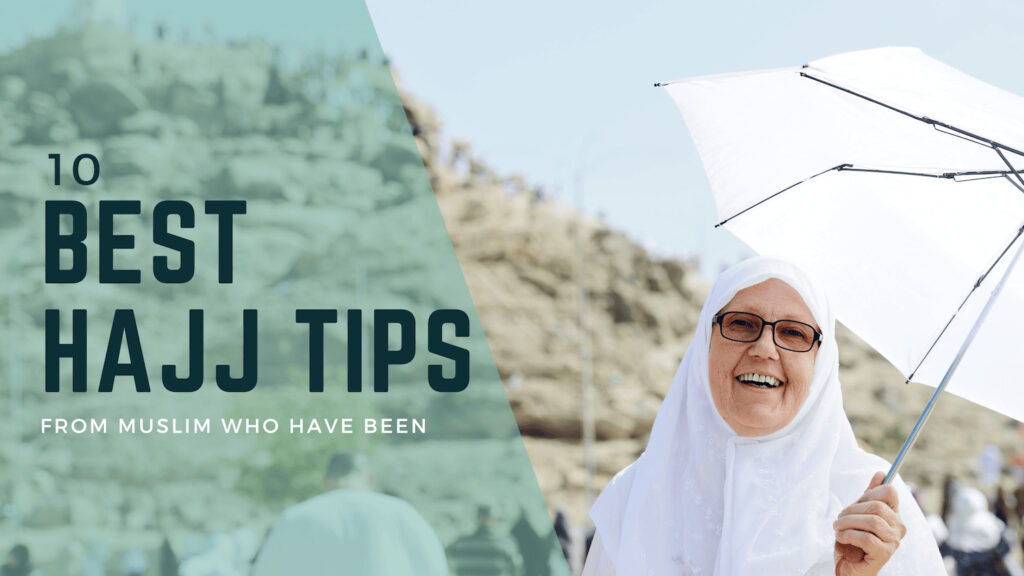
Practical Hajj tips from Muslims Hajjis
#1 have extra copies of important documents.
Make sure you make extra copies of your documents, as they could get lost. It’s always a good idea to keep extra copies in different places while on Hajj, for example, one in your luggage and one with you; in case you lose one, you will have a backup copy.
On your phone, keep your Hajj permit and also a copy of your passport. I always have one in case it gets lost, stolen or misplaced. Keep it safely in your bag.
#2 Check for obligatory vaccinations & restrictions
Saudi officials have announced that for this year, you don’t need Covid vaccinations, and there are no requirements for the vaccine, but they still require the Flu vaccine and meningitis one. Whether they will be checking is another story, but they have been requested by people going.
Keep copies of these as well, printed and on your phone. For the years that the certificates for require to enter Saudi, I always had them with me on my phone.
#3 Start walking asap
Universally the one major tip by people was that you need to walk a minimum of 10k steps a day. Many people mentioned they had walked even up to 30k steps in one day during Hajj. So it is definitely advisable to start as soon as you plan to go for Hajj.
The fact that during Hajj, someone could walk up to 20 miles skips a lot of people’s minds, and they start their Hajj journey without considering their physical state.
It is extremely important to exercise before Hajj, as it will be easier for you, not only to perform your religious obligations and reduce the physical strain but to enjoy the experience more. Considering you have other factors to navigate, like the heat and the fact you might not be able to carry water with you all the time, you will enjoy more of your Hajj without tiredness.
Start walking months in advance but also sign up for classes like Pilates, Zumba or other cardio options to help you. It doesn’t matter whether you are a male or a female. You can even do them at home with Youtube videos.
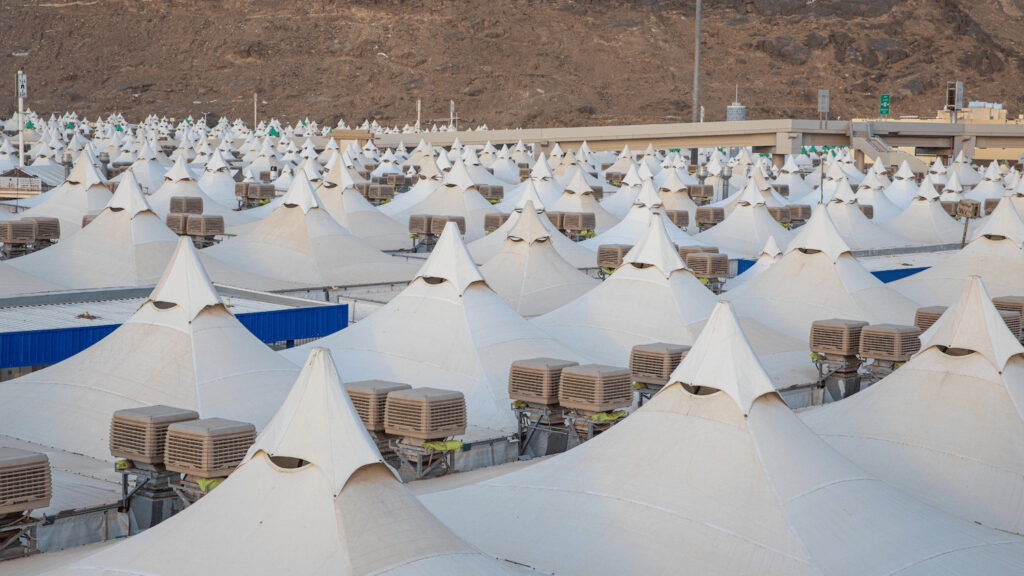
#4 Pack For a comfortable stay
Depending on your Hajj package, you will have things included like ihram for men, pillows and bedding in the Mina camp however, if you have to have a more comfortable stay bring things that also make you feel good.
Considering you will be tired and hot, clothing that is breathable is vital whether you are a male or a female. Polyester abaya and thobes are suggested to be avoided. Bring a cotton abaya and if you feel comfortable, light colours too. Hajj in 2023 is over the hottest months so making sure you are comfortable is essential.
Bring comfortable shoes. Crocks were suggested, and personally, my Birkenstocks, the beach version, have been lifesavers during Umrah.
Others suggested you bring adaptors and extension cords and to create a small amenity kit for your Mina stays to have everything on hand. I will be creating a packing Hajj article because a friend of mine made a great one, and I have to share it.
One-piece hijabs for Umrah and Hajj could save sisters a lot of worrying as they stay put and cover your hair. Furthermore, for a more comfortable stay, you can consider extra sheets, a travel pillow and a camping mattress which are easy to carry.
#5 Have a small light backpack
Everyone suggested that you bring a small backpack with you for your daily essentials. This is on top of the luggage you will have with you during your Mina stay for your clothes.
I bought this backpack for my trip to Peru and it was great and light.
Having in mind that many people could wait four or more hours to be processed, what you have in your bag is extremely important for those hours. Some snacks, water or fruit for the long wait or walks can be helpful.
You can also consider investing in a belt bag for easy access to your phone as well. I use mine for Umrah, and it is super helpful to keep my hands free but have my essentials.
In my bag, I always have a power bank as well to charge my phone. This is mostly for Umrah because I do take a lot of photos when in Makkah for the blog, but even when I travel, I have one.
#6 Know that toilet facilities are limited
Toilet facilities are shared with, of course, in the camp, and they are going toilets, which means you will definitely need to keep that in mind.
People suggest you bring a bottle for cleaning yourself; you can get a spray bidet from Amazon or even a normal bottle. A belt of some sort might also help you to keep your abaya from getting wet, as some mentioned there are no hooks on the doors they had.
A sister mentioned you actually took a hook with her for the door to keep her abaya which I thought was cool.
#7 Have no expectations
I think pretty much everyone mentioned this to me. Don’t go with high expectations even if you have a VIP package and you have paid thousands. Don’t expect 5-star service and ease. If you don’t want to get disappointed, you should keep your expectations low.
Expect to be tested with what you don’t like the most. Hajj is not a holiday but a ritual and an Islamic obligation that, if completed right, will wipe out all your sins. So don’t think it will be a walk in the park but more like up the mountain under to hot sun.
Allah will test your patience with what you don’t like the most, as at the end of it, the reward is worth it.
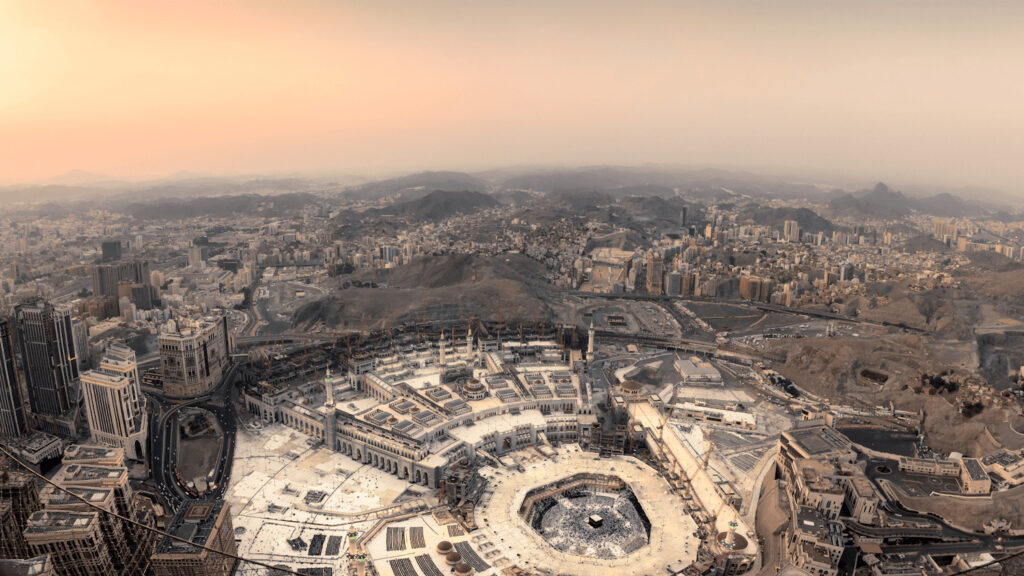
One of my personal struggles during Umrah is people and how they push and try to get ahead, or they go super slow.
I can only imagine how Hajj will be, and this was echoed by what people on social media shared. Expect that you will walk behind slow people, that Jamarrat will be of you also being pushed. It doesn’t matter that people are in ihram or that you are doing Hajj or Umrah. You will experience this.
Different cultures and language barriers don’t help, and with millions together in a small space, it is inevitable.
Keep in mind you are there to please Allah, you have nowhere else to be, and this is an act of worship as well, in a way.
As there is no gender segregation in pushing, if you’re a woman, you should stay close to your mahram or have the means to contact each other if you get lost.
#9 Make a list of all your Duas
Prior to leaving for your Hajj, make a list of all your duas. Hajj is a spiritual journey above else. We sometimes get caught up in the rituals of hajj or what to pack for it, but this is your chance to ask for anything.
I know from experience that when I am doing Umrah, I keep repeating the same duas repeatedly because I forgot my lesser once or the wording.
Many sisters suggested writing down all of your crazy duas and actually keeping them on your phone or your book. The day of Arafat is a golden ticket and your chance to make those duas, and you don’t want to miss it. Make them crazy and include duas for Dunya and Akhira. They will be answered insha’Allah.
You can definitely include the duas from the Hajj books but make sure you also have your own personal duas. While you are at it also ask family and friends what dua they want. You still get the reward too.
#10 There is a lot of waiting
There is a lot of waiting during Hajj for people to move for groups to leave etc. People have recommended having books, your dua list and a journal to keep you company. Keep busy with beneficial acts even when you are not performing rituals rather than idle chatting.
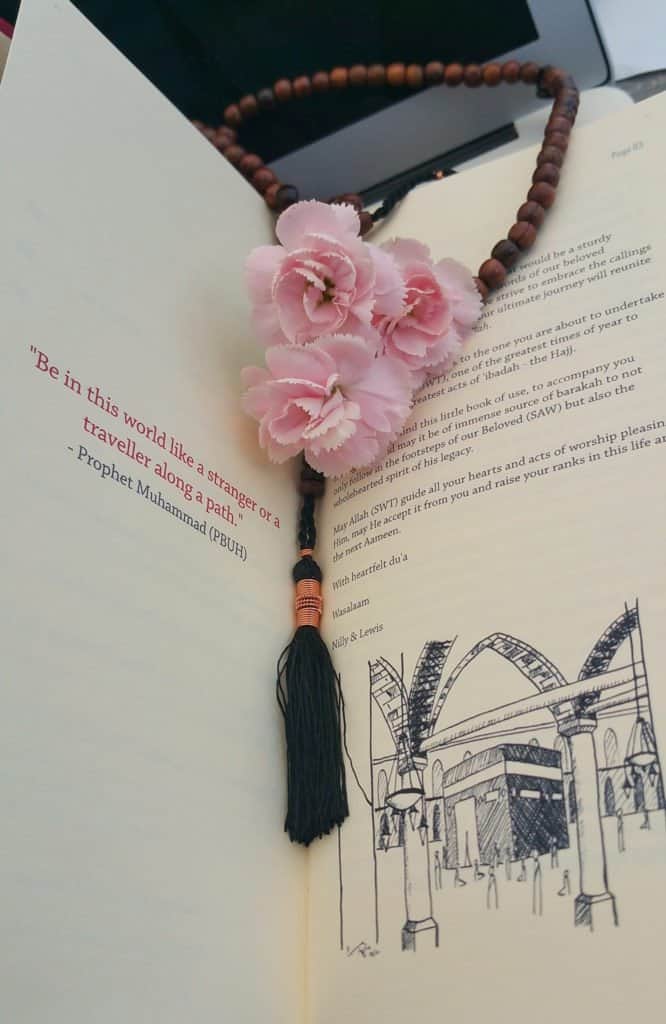
Not everything you read needs to be Islamic, you can read inspirational books that will elevate you mentally or you can read one of the all-time classic Secrets of Devine Love . Anything to spiritually elevate you and make this one of the best hajj and experiences of your life.
You can bring your Kindle so it is easy to read and not carry around too many things. Personally, I always have a note on my phone where I journal while on Umrah and add duas to my list.
Someone had said Hajj is jihad without thorns, and I loved this saying.
It is a once-in-a-lifetime experience that many say you become a different person internally. Read and learn the rituals of Hajj, but no matter how many articles you read about the best Hajj tips from those who have already performed Hajj, you will only learn through going through the holy pilgrimage of Hajj yourself.
Allah invited you to his house to complete a pillar of our religion; we know millions have missed Hajj this year for one reason or another. Open your heart to all the goodness and tests, and insha’Allah, you will be blessed in this life and the next.
The Ultimate Guide on How to Do a DIY Umrah; (Do-It-Yourself)
Umrah The Best DIY Umrah Packages Done for You
The Best Practical Tips You will Need When Travelling for Umrah or Hajj with Kids!
Share with Friends
What is Hajj? A step-by-step guide to the Muslim pilgrimage
Here’s how Muslims perform the rituals of Hajj every year, following an ancient example.
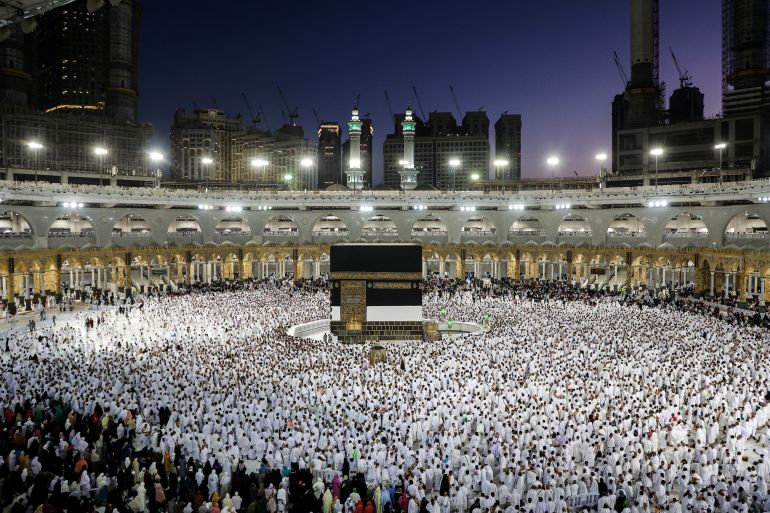
Every year, millions of Muslims from around the world gather annually in Mecca to perform Hajj – the sacred Muslim pilgrimage.
Hajj became obligatory for every able-bodied Muslim adult who has the financial means to do after Prophet Muhammad’s “farewell pilgrimage” in 632 AD.
Keep reading
A new hajj booking system leaves tour operators out in the cold, hajj to return to pre-covid numbers, saudi arabia officials say, israel discussing possible direct hajj flights to saudi arabia.
According to Islamic tradition, the Kaaba – a black silk-clad stone structure at the heart of the Grand Mosque in Mecca – was built by the Prophet Abraham and his son Ishmael.
Every year, between two and three million people participate in the pilgrimage.
However, due to the coronavirus pandemic, there were only 10,000 pilgrims in 2020 . The following year saw 58,700 pilgrims, and last year’s numbers picked up again to one million.
Hajj is a spiritual, emotional and physical challenge that tests the patience and temperament of the pilgrim.
It occurs in Dhul-Hijjah, the 12th and final month of the Islamic lunar calendar, between the eighth and 13th days of the month.
This year, Hajj is taking place between June 26 and July 1. Here is a step-by-step guide to the rituals on each day:

Intent and ihram – The very first rite of Hajj is to make a pure intention and to enter ihram – a pilgrim’s sacred state – when crossing the outer boundaries of Mecca, called Miqat.
Entering ihram entails wearing plain garments – two unstitched pieces of cloth for men, or loose-fitting clothing for women – as well as following certain rules, such as not giving in to anger or engaging in sexual activity.
Pilgrims then perform tawaf, which means circling the Kaaba in an anticlockwise direction seven times, and sai, which refers to running between the Safa and Marwa hills.

Mina, the tent city – After that, the pilgrims travel by foot on pilgrim paths or take a bus for the 8km (five-mile) journey to Mina, a tent city just outside of Mecca.
The pilgrims spend the day in Mina, setting out the next morning at dawn. Most of the time in Mina is spent in prayer, supplications and remembering Allah (God).
A day on Arafat – The Day of Arafat is considered one of the most important days, not just of Hajj, but of the Islamic calendar. After making the 15km (nine-mile) journey from Mina, pilgrims spend the day at Mount Mercy in reverent prayer.
This is known as wuquf – the act of standing before Allah from noon to sunset.
The site is particularly revered as the place where the Prophet Muhammad delivered his last sermon.
Around the world, many Muslims choose to fast on this day.

Heading to Muzdalifah – After sunset, it is time to move again, this time to Muzdalifah – a 11km (7-mile) trip – where the pilgrims will spend the night under the stars. Many also begin collecting 49 pebbles here for the next day’s rites, for which they will depart again just before sunrise.
Nahr and stoning the devil (rami) – The 10th of Dhul-Hijjah is Eid al-Adha, a day celebrated by Muslims around the world as the greater of the two Muslim holidays.
Leaving Muzdalifah, the pilgrims arrive back in Mina before dawn to perform the first rami, throwing seven pebbles at the largest of three columns known as Jamarat al-Aqaba.

This act is a symbolic stoning of the devil, based on historical tradition. Muslims believe that God told Abraham to sacrifice his son as proof of his faith.
It is believed that at this spot in Mina, the devil appeared and tried to dissuade Abraham from heeding the command. Abraham responded by throwing stones to scare him off.
Muslim pilgrims should also sacrifice an animal, known as nahr . Either a camel or lamb is suitable, and the meat should be distributed to the needy. Pilgrims can either buy sacrifice coupons/vouchers, which state that the sacrifice has been made on their behalf or perform their own sacrifice.
Days 4 and 5
The act of throwing stones is repeated for the next two days, pelting the three pillars using seven pebbles each in order by starting with: Jamarat al-Ula (the small pillar), then Jamarat al-Wusta (the second/middle pillar) and finally, Jamarat al-Aqaba (the third/large pillar).
Halq or taqsir – Upon completion of rami, the 12th day of Dhul-Hijjah, the men shave their heads (halq) or trim their hair (taqsir). Women can trim their hair by the length of a fingertip.

The farewell tawaf – After that, the pilgrims can remove their ihram clothes. Many will then proceed to Mecca to perform tawaf and sai again.
When that has been done, they return to their campsite in Mina, marking the completion of Hajj.
Many pilgrims also visit Medina, the second holiest city in Islam, before heading home. Medina is not part of the pilgrimage but is regarded as the site where Prophet Muhammad is buried along with his closest companions.
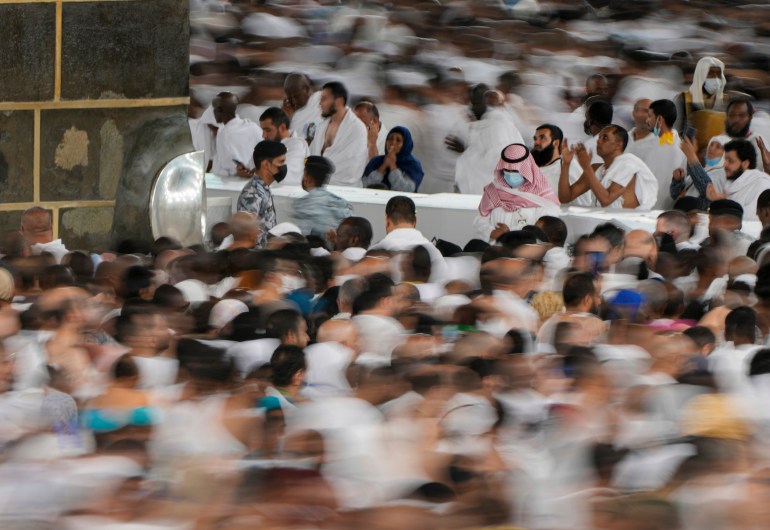
Pilgrim Knowledge
Umrah for those who need it
Pilgrim Fund
Saving For Pilgrimage

Islamic Landmarks.com
Historical Islamic Sites

My Dua List
Easiest way to collect dua requests
Step by step Umrah
Detailed Hajj Guide
Tailored Guide
Sites, shops and more
7 Steps of Hajj – Complete Hajj Guide For Pilgrims
Table of Contents
Being one of the fundamental pillars of Islam, Hajj can be defined as an annual spiritual experience undertaken by Muslims at least once in their lifetime to express their servitude and faith towards Allah (SWT). Following the 1,377-year-old Sunnah of Prophet Muhammad (PBUH), millions of Muslims visit the Holy Kaaba every year in the Islamic month of Dhul-Hijjah to offer Hajj.
However, in order to be eligible to perform Hajj, a Muslim must be physically, mentally, and financially stable.
The condition to be financially and physically competent to perform Hajj is called “istita’ah,” where the Muslim who successfully fulfills the journey is called “Hajji” or “mustati.”
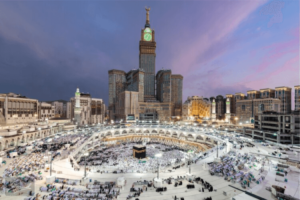
Allah (SWT) on the significance of Hajj says in the Holy Quran, “We have completed the shrine (Holy Kaaba), a focal point for the people and a secure sanctum. You can use Abraham’s shrine as a prayer house; we give power to Abraham and Ismail. You shall clean my house for those who make a visit and those who live there and those who nod and prostrate.” (2:125)
In another place in the Quran, Allah (SWT) states, “And to people the Hajj. They will come here to you on every sinewy camel: they will come here from every deep and distant.” (22:27)
The rituals of Hajj are performed in a five or six day’s duration, officially beginning on the 8 th Dhul-Hijjah to ending on the 13 th of the same month; Hajj is the largest annual religious event that takes place in Islam. Literally meaning “to take part in the journey,” The 7 steps of Hajj are as follows:
Step 1 – Ihram and Intentions
- Step 2 – Mina aka “City of tents”
- Step 3 – Mina to Arafat, 9th day of Dhul-Hijjah
Step 4 – Muzdalifah
- Step 5 – Rami – Stoning the devil
Step 6 – Nahr
Step 7 – farewell tawaf.
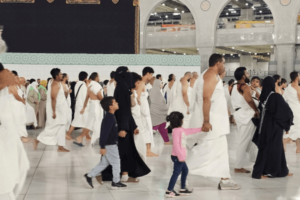
Making a pure intention and wearing the Ihram are the two of the first essential steps when going for Hajj. After making the niyat, Muslim pilgrims are advised to wear the Ihram- two pieces of unstitched white sheets for men and a loose-fitting Abaya for women, properly covering the whole body.
It is recommended that the pilgrim should wear the Ihram on Dhul-Hijjah before entering Miqat – the outer boundaries of Makkah. The five entry points or relevant Miqats for pilgrims are as follows:
- Abbyar Ali (Dhu’l Hulaifah) – This is the point of Miqat for pilgrims coming through Madina or from Saudi Arabia. They are advised to perform Hajj al-Tamatt’u.
- (As-Sail Al-Kabeer) Qarn-al Manzil – This is the point of Miqat for pilgrims coming through or from Taif or Najd.
- Al- Juhfah – Located near Rabigh, it is the point of Miqat for pilgrims coming through or from Egypt, Syria, or Morocco.
- Dhat’Irq – Is the point of Miqat for pilgrims coming from or through Iraq.
- Sa’adiyah (Yalamlam) – This is the point of Miqat for pilgrims coming through or from Yemen, India, or Pakistan.
Also, once in Ihram, pilgrims are advised to recite Talbiyah while abstaining from all sinful acts. The Talibyah should be recited in a loud voice:
لَبَّيْكَ اللَّهُمَّ لَبَّيْكَ، لَبَّيْكَ لَا شَرِيكَ لَكَ لَبَّيْكَ، انَّالْحَمْدَ، وَالنِّعْمَةَ، لَكَ وَالْمُلْكَ، لا شَرِيكَ لَك َ
Labbayk Allaahumma labbayk, labbayk laa shareeka laka labbayk, ‘innal-hamda, wanni’mata, laka walmulk, laa shareeka laka.
“Ever at Your service, O Allah, every at Your service. Ever at Your Service, You have no partner, ever at Your service. Verily all praise, blessings, and dominions are Yours. You have no partner.” (Muslim 2:841)
After arriving at Makkah, Muslims intending to perform Hajj al-Tamatt’u should combine the rituals of Umrah with Hajj . For this, Muslims walk around the Holy Kaaba 7 times in an anti-clockwise direction, also known as Tawaf .
They then perform the ritual of Hajr-e-Aswad (Black Stone) and move towards the next stage of Umrah, running between the Safa and Marwa hills. Once the Umrah is complete, pilgrims start their journey towards Mina.
Wearin ihram during Hajj can inspire believers to improve themselves as it is is similar to the shroud used to wrap bodies before they are buried and death comes unannouncede
Step 2 – Mina aka “City of Tents”
Situated 5 to 6 km from Makkah, Mina is a small town. Arriving at the tent city of Mina, pilgrims are advised to rest there until the following day. Starting with the noon prayer (Zuhr) and ending with the dawn prayer (Fajr), pilgrims recite all five Salahs while staying in Mina.
Today, the land of Mina comprises modern tents that are equipped with all essential amenities. Muslims should recite both compulsory and non-compulsory prayers while staying at Mina.
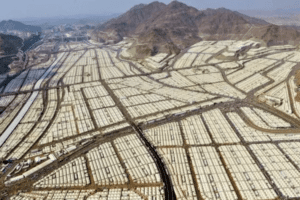
Step 3 – Mina to Arafat, 9th Day of Dhul-Hijjah
On the morning of the second day of Hajj that is 9 th Dhul-Hijjah, the pilgrims start walking towards Arafat while reciting Talbiyah at the top of their voices. Muslim pilgrims observe Zuhrain – a combination of Zuhr and Asr prayer with Qasar prayer upon reaching the mount of Arafat.
This is known as Waquf – the act of standing before Allah (SWT) and is observed near the Jabal al-Rahmah from noon to sunset.
Located 14.4 km from Mina, Mount Mercy or Jabal al Rahmah of the Arafat was where the beloved Prophet Muhammad (SAW) delivered the final sermon.
The pilgrims’ next destination for Hajj is Muzdalifah, a small town located between Mina and Mount Arafat. Upon arriving at sunset on the grounds of Muzdalifah, the pilgrims offer Maghribaen – a combined prayer of Maghrib and Isha. Muslims spend one whole night under the open sky and collect 49 pebbles of similar sizes for the ritual of Rami (stoning of the Devil). They then leave the town of Muzdalifah on the morning of 10 th Dhul-Hijjah.
As Muzdalifah is the place where pilgrims spend the night before pelting Satan, every pilgrim’s heart is filled with new resolutions as they make Dua while picking up the stones and during Jamarat, they should intend to throw their own bad habits alongside
Tawaf al-Ifadah and Sa’i
The pilgrims now head back to Makkah to perform Tawaf al-ifadah and Sa’I, the act of running between the Safa and Marwa hills. Once done, Muslims then go back to Mina to perform the acts of Rami, Nahr, and Halq.
Step 5 – Rami (Stoning the Devil)
On arriving at Mina, pilgrims perform the act of Rami by stoning the Jamraat al-Aqabah. Seven stones are thrown at the column structure. The stoning of Jamrat is performed in the memory of the act of Prophet Ibrahim (AS) when the devil tried discouraging him from following Allah (SWT) command.
In reply, Prophet Ibrahim (AS) threw small pebbles to make the devil go away. Rami should be carried out at noon each day. Rami is performed on the 11 th and 12 th of Dhul-Hijjah.
After the completion of Rami, on 12 th Dhul-Hijjah, Muslim pilgrims are advised to perform the sacrifice of an animal ; it can be a camel or lamb. For this, pilgrims can either purchase sacrifice coupons or vouchers, stating that the sacrifice has been made on their behalf. The meat of the sacrificed animal should be distributed to the needy.
Halq and Taqsir
Halq means shaving the head, while Taqsir means shortening or clipping of hair. After performing the sacred sacrifice, men pilgrims are advised to get their heads completely shaved or clipped.
While forbidden to shave their heads, women are advised to get a strand or lock of their hairs chopped. The act of Halq and Taqsir symbolizes a Muslim’s complete devotion to Allah (SWT) and detachment from worldly appearances.
After completing the ritual, pilgrims return to the Holy Kaaba in Makkah to perform the “Tawaf al-Ifadah,” also known as the “Farewell Tawaf,” followed by Sa’I. Though this officially marks the end of Hajj, many pilgrims also visit Madinah before heading home.
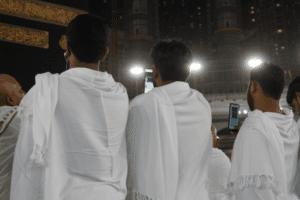
Why Do Muslims Go Around the Kaaba 7 Times?
There’s no specific explanation as to why Muslims go around the Kaaba seven times. Just like Muslims are advised to worship five times a day, they are told to take seven rounds around the Holy Kaaba while performing Umrah or Hajj.
However, the act of Tawaf is a reflection of the idea that a Muslim’s life should only revolve around obeying the commands of Allah (SWT) and following the Sunnah of Prophet Muhammad (PBUH).
Summary – 7 Steps of Hajj
Hajj is one of the five essential pillars of Islam. Being compulsory on every Muslim, it is advised that Hajj be offered at least once by financially and physically able Muslims.

100% of readers found this article helpful. Did you?
Report an issue
Through His Names
New course with Ustadh Shabbir Hassan
Your content goes here
“Pilgrimage to this House is an obligation by Allah upon whoever is able among the people.” — Qur’an 3:97
Want a guided tour of Jannatul Baq? Learn more here.
Alert: It is recommended that you take a drawstring bag for your shoes. Keep them close to you because they can get lost fairly easily.
Recommended Reads
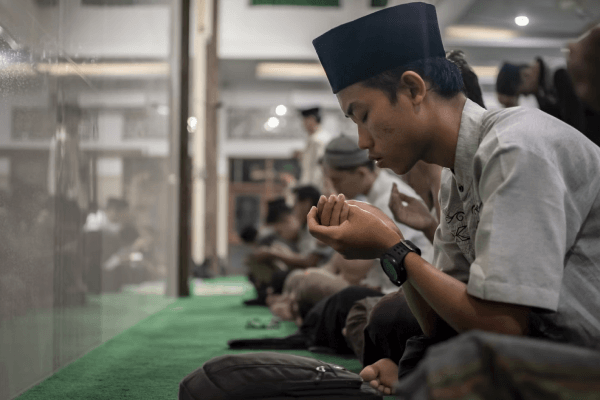
6 minute read

Masjid Al Bayah – Pledge Between The Muslims & Ansar
5 minute read

Masjid Jirranah – Mosque, Miqat & Distribution of War Spoils
4 minute read
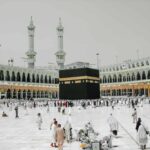
Bani Shaiba – History, Facts and Significance – Everything You Need To Know
14 minute read

Gates of Masjid Al Nabawi – List of all 42 Doors
19 minute read
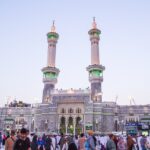
Gates of Masjid Al Haram – Complete List of All Gates/Doors
Recommended Videos
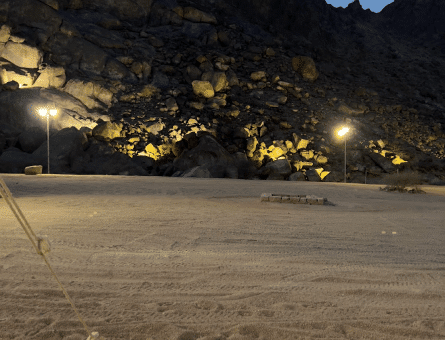
What Did the Prophet Muhammad (saw) Say at Arafah?
· 1.7K views
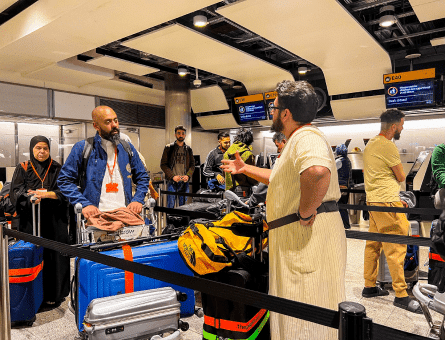
What should I pack for Hajj or Umrah?
· 5.5K views

E8 I The Light I Through His Names

E10 I The Responder I Through His Names
· 6.9K views
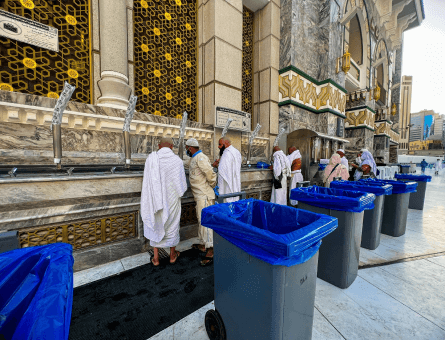
Do I need wudhu to complete Sa’i?
· 2.8K views
Thanks for your contribution!
We’ve recorded your feedback. A team member will be reviewing this shortly.
Verified by mark
This article has been verified for authenticity by 7 Steps of Hajj – Complete Hajj Guide For Pilgrims.
Step 1 - Ihram and Intentions
- Step 2 - Mina aka “City of tents”
- Step 3 - Mina to Arafat, 9th day of Dhul-Hijjah
Step 4 - Muzdalifah
- Step 5 - Rami - Stoning the devil
Step 6 - Nahr
Step 7 - farewell tawaf, step 2 - mina aka “city of tents”, step 3 - mina to arafat, 9th day of dhul-hijjah, step 5 - rami (stoning the devil), summary - 7 steps of hajj.
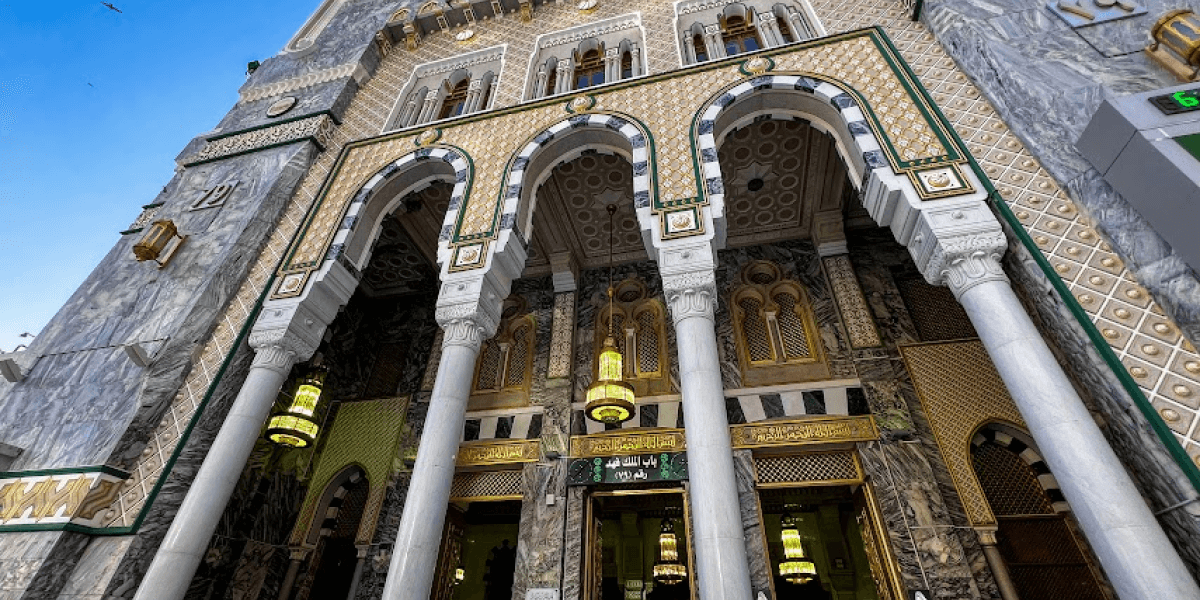

- Umrah Experience
- Tourism in KSA
- #UmrahwithMe
Hajj Step by Step: A Comprehensive Hajj Guide

The Hajj is a pilgrimage to Makkah, Saudi Arabia’s holy city, that every adult Muslim must make at least once in their lives. Here’s our complete Hajj guide for a smooth rewarding journey. The Hajj is the fifth of the five Islamic pillars that make up the religion’s core beliefs and primary practices. The pilgrimage rite starts on the 7th of Zilhaj (the Islamic year’s final month) and ends on the 12th.
All Muslims who are physically and financially capable of performing the Hajj must do so, provided their absence does not create any challenges for their families. A person can also complete the Hajj by proxy, which means they can appoint a cousin or friend to ‘stand in’ for them on the journey.
Read about A Brief History of Hajj
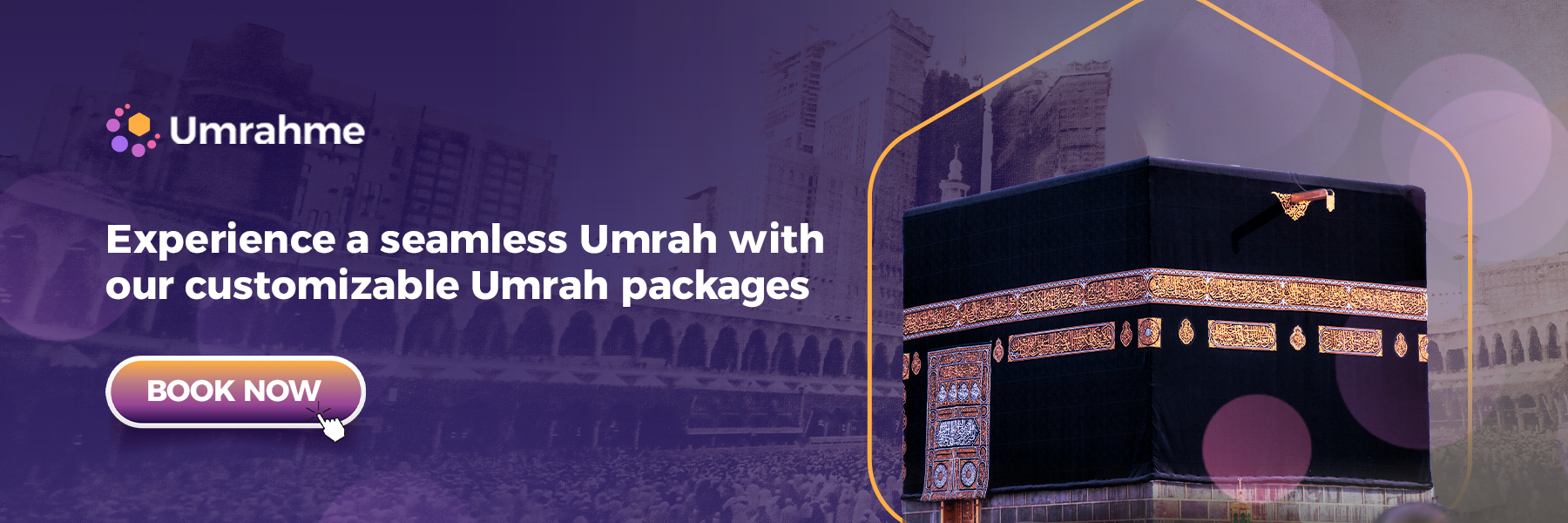
Four main pillars of the Hajj
The four key pillars of Hajj we are going to mention in this Hajj guide include Ihram, Saee, Waqfat, Arafah, and Tawaf al-Ifaadah.
A brief history of the Hajj
The Hajj dates back to 2,000 B.C. when Prophet Ibrahim’s young son (Prophet Ismail) was trapped in the desert. With Prophet Ismail near death from dehydration, his mother Hajra rushed back and forth between the hills of Safa and Marwa in search of water until the angel Jibril (Gabriel) landed on earth and constructed the Well of Zamzam, a stream of fresh water for the baby.
Prophet Ibrahim (AS) is claimed to have built a monument at the spring site known as the Kaaba on God’s orders. Worshipers of all faiths flocked to the site around 630 A.D., led by the Prophet Mohammed.
How to prepare for the Hajj?
Muslims are obliged to enter a condition of purity and dress appropriately before crossing the Miqat boundary , known as Ihram . In this Hajj guide we will tell you more about the preparations and the before the journey planning. The men wear outfits with two basic white sheets wrapped around the body, exposing the right shoulder. Women can also utilize white sheets or dress modestly in any color, exposing only their face and hands.
To get into the state of Ihram , an individual must complete their hygiene rituals, such as trimming their nails and removing armpit and naval hair. They should also perform ghusl or W udhu if G husl is not possible.
The History of Sai
The Sai ritual commemorates the actions of Lady Hajra, Prophet Ibrahim’s wife, who traveled back and forth seven times between the two hills in search of water for her infant son Prophet Ismail, who was thirsty.
Prophet Ibrahim (AS) transported his wife and newborn to Makkah after the birth of Prophet Ismail (AS), and according to Allah’s commands, he left them under a tree with few provisions. Lady Hajra was initially terrified, but after realizing that these were Allah’s orders, she knew that Allah would never abandon them. She then awaited Allah’s blessing.
After their water ran out, Lady Hajra, still nursing Prophet Ismail, could not feed her baby. Prophet Ismail began to wail and was on the verge of dying, prompting Lady Hajra to flee into the desert in search of water, hoping to acquire a better view of the region or spot a passing traveler who could assist them.
She ran between the two hills seven times before returning to check on her son. She then witnessed the ground explode, releasing water, which Lady Hajra drank and used to feed her child. Following that, angel Jibril told Lady Hajra that she would not die and that Prophet Ismail (AS) would assist his father, Ibrahim, in constructing the House of Allah, Al-Kaba’a, at this exact spot.
What happens at the Hajj?
Let’s start the journey and in this Hajj guide, we will start with the first day in which, pilgrims travel to Mina on the first day (the Day of Quenching Thirst). Some parties prefer to travel the 5-6 miles from Makkah to Mina either the night before or on the morning of the 8th day of Zilhaj.
Pilgrims walk to Mount Arafat on the second day (the Day of Arafat), where Prophet Muhammad (PBUH) delivered his farewell speech which included teachings on how women should be treated and how all Muslims should strive to remain united.
To do Wuquf al-Arafat correctly, you must be present at Mount Arafat from midday on day two until the start of Fajr on day 3.
The remaining part of the second day is spent in prayers, reciting Talbiyah , reading the Holy Quran, and connecting with Allah. It is the most crucial aspect of the pilgrimage, and one must avoid eating, talking, or sleeping during this time.
The third day, or Eid day, is known as the Day of Sacrifice. Certain rites must be performed in a specific order on this day (the 10th) or between dawn and sunset on the 12th day of Zilhaj to be valid.
- The first rite involves throwing stones at the most significant pillar, the only huge pillar closest to Makkah.
- The animal sacrifice begins after the Rami (pelting) of the biggest pillar. Known as Qurbani, it is usually done on behalf of the pilgrim.
- Muslims get their hair shaved or trimmed after the sacrifice is made. Hujjaj can do this in Mina, Makkah, or Muzdalifah, but Hujjaj must do it before sunset on the 12th of Zilhaj and within the Haram limits.
- The final rite is Tawaf al-Ziyarah, which must be only performed after the hair has been cut. This ritual includes seven rounds around the Holy Kabaa inside Masjid Al-Haram, as well as two Rakats of prayer and sipping of the Zamzam water.
Health & Safety Protocols
The Saudi government has put an excellent health care system in place from when the pilgrims arrive in the Kingdom to when they leave for their home countries. To this end, the ministry also assigns thousands of practitioners and administrative staff to serve the pilgrims. Makkah, Madinah, and other holy sites also provide a slew of health facilities. At the same time, many advanced emergency centers are also made available in the Holy Mosque in Makkah.
If you’re looking for Umrah packages, head over to our website and book our meticulously planned Umrah packages .
Related post

Connecting with Prophet Muhammad during your stay in Madinah

All about Saudi Arabia Visa Requirements & Visa Types

Umrah Packing Checklist: Essential Guide for First-Time Umrah Pilgrims

Umrah 2024: History, Booking, Rituals & More

Umrah Travel Tips: Health and Well Being During Umrah Pilgrimage

Masjid Nabawi: Prophet’s Mosque Etiquette and Spiritual Insights

Hajj Voyage Tips and guide
- Stay healthy
The traditional annual Muslim pilgrimage to Mecca , the Hajj is a mandatory religious duty for Muslims and is the largest annual gathering of people in the world. It occurs between the 8th and 12th of the last month of the Islamic calendar, Dhu al-Hijjah. Hajj is that symbolic pilgrimage when millions of Muslims from around the world belonging to different ethnic groups, socioeconomic strata and cultures travel to Mecca together and praise to Allah and ask for forgiveness of their sins.
The five day spiritual Hajj, which dates back to the 7th century of the Christian calendar, is designed to promote the bonds and affection between Muslim communities and shows that everyone is equal in the eyes of Allah by wearing simple white garment Ihram. Pilgrims spend days worshiping in and around the holy city of Mecca and perform rituals that make up the Hajj.
Understand [ edit ]
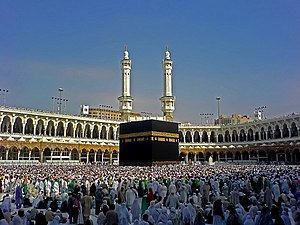
The Hajj is one of the five pillars of Islam ; every adult Muslim is supposed to do it at some time in their life if health and finances permit. In poorer areas it is not uncommon for whole families or even whole villages to chip in to send one person.
It is an exceedingly cosmopolitan affair. Predominantly Muslim areas include most of North Africa , the Middle East and Central Asia , plus South and Southeast Asian countries such as Pakistan , Bangladesh , Malaysia and Indonesia and several countries in West Africa . Several other areas have large Muslim minorities and there are some Muslims nearly everywhere. The pilgrimage brings Muslims from all these places together.
It is also one of the largest human migrations. Every year over two million people visit Saudi Arabia for this pilgrimage. Since they all arrive at roughly the same time and visit the same places in the same order, and since a large number of Saudis go as well, this is a major logistical problem. The Saudi government has a ministry to manage it.
The Hajj can only be completed during the Islamic month of Dhu al-Hijjah. A pilgrimage to Mecca at any other time is known as Umrah (عمرة), and while not compulsory is strongly recommended.
People who have completed the Hajj are entitled to use the honorific title Haji (men) or Hajjah (women).
History [ edit ]
The early history of Hajj can be traced back to the time of Abraham, around 2000 BCE. According to Islamic tradition, Abraham was ordered by Allah to leave his wife Hagar and his son Ishmael alone in the uninhabited desert with little food and water, where Mecca stands today. When the food and water were gone, Hagar, in search of water for her baby Ishmael, desperately ran seven times between the two hills of Safa and Marwah but found nothing. Returning in despair to Ishmael, she saw him scratching the ground with his leg and a water fountain underneath. Later, the uninhabited desert area started to attract inhabitants due to availability of water and tribes started to settle in Mecca. When Ishmael grew up, he was married into a tribe in Mecca. At some point, Abraham was commanded by Allah to construct a building believed to be the Kaaba, which he did with the help of Ishmael. Abraham was commanded by Allah to invite people to perform pilgrimage in Mecca around the Kaaba.
In pre-Islamic Arabia, Meccans were idol worshippers and the Kaaba was surrounded by pagan idols. During the annual pilgrimage season, people would visit the Kaaba to perform rituals some of which were introduced by Arabs of that time. It is believed some pilgrims would perform tawaf around Kaaba in a naked state. During the initial years of Muhammad's prophethood, the pilgrimage season offered Muhammad the occasion to preach Islam to the foreign people who came to Mecca for pilgrimage. In 630 CE, after Mecca was conquered by Muhammad, he led his followers from Medina to Mecca, cleansed the Kaaba by destroying all the pagan idols, and then reconsecrated the building to Allah. In 631 CE, at the direction of Muhammad, Abu Bakr led some 300 Muslims to the pilgrimage in Mecca where Ali delivered a sermon stipulating the new rites of Hajj and abrogating the pagan rites. He especially declared that no unbeliever, pagan, or naked man would be allowed to circumambulate the Kaaba from the next year. In 632 CE, Muhammad performed his only pilgrimage with a large number of followers, and instructed them on the rites of Hajj and the manners of performing them. From then, Hajj became one of the five pillars of Islam.
In medieval times, pilgrims would gather in the big cities of Syria, Egypt, and Iraq to go to Mecca in groups and caravans comprising tens of thousands of pilgrims, often under state patronage. Some Hajj caravans were guarded by soldiers because there were risks of robbery or attack or natural hazards. Muslim travelers like Ibn Jubayr and Ibn Battuta have recorded detailed accounts of Hajj travels in medieval times.
Despite it being illegal for non-Muslims, a few Western explorers have managed the journey — most notably, Sir Richard Burton made the Hajj in 1853 and wrote an account of the trip .
Prepare [ edit ]
Unless you are a citizen of Saudi Arabia you will need a visa, obtained in advance from a Saudi embassy. Visas are allocated on a quota system, based on the number of Muslims in a country. You may need to provide evidence that you are Muslim, such as a letter from your local mosque. You are not permitted to perform the Hajj on a tourist visa; you will need a special Hajj visa for the purpose. However, you may perform Umrah on a tourist visa outside the Hajj season.
Citizens of most countries can register directly with the Saudi government on their Hajj website , where Hajj visas are allocated on a first come first serve basis. Some countries have domestic regulation on the Hajj; in these countries, you will need to register with the local governing body of Islam, who will allocate Hajj places based on their own domestic rules.
Since 2023, women are no longer required to travel with a mahram (male family member) to perform the Hajj, and may now travel alone.
Proof of vaccination for meningitis (specifically the ACYW135 vaccine) between three years before and ten days before your entry into Saudi Arabia is required. Yellow fever vaccination is required if you arrive from any country with known yellow fever infections, and polio vaccinations are required for children up to 15. As millions of people from all over the world gather for Hajj and therefore you will be exposed to many diseases, you may want to discuss other vaccinations and preventative measures with your doctor.
Throughout Hajj you are expected to remove signs of wealth or class distinctions by replacing your clothing with simple white garments. These pieces are called ‘ihram clothing’, and for women comprise of a white abaya, scarf or shawl and socks. The ihram clothing of Hajj is a signifier of equality: all pilgrims are presented as equals in the eyes of God. The white clothing also symbolises purity, and the state of absolute devotion that the pilgrims are in.
Get in [ edit ]
In medieval times, people made the pilgrimage to Mecca by camel caravan or by ship; the journey often took months, sometimes even years.
Today, most pilgrims arrive via the airport at Jeddah . Airlines in most Muslim countries offer special flights specifically for Hajj and Jeddah has many regular commercial flights as well, in particular flights to most major European or Middle Eastern hubs. See Jeddah#Get_in for more information.
There are two special Hajj terminals, the largest buildings by roof area in the world at 260,000 m 2 (2.8 million ft 2 ). They are enormous tents of fiberglass fabric on reinforced concrete poles and steel cables. At Hajj time, there are dozens of large aircraft parked alongside these terminals. These are used only for the Hajj; the airport has other terminals for normal travel. Driving to the North Terminal, you pass between the two Hajj terminals.
From Jeddah — for most pilgrims, directly from the airport — there are chartered buses and taxis to Mecca. Many are painted in the yellow and black pattern used on school buses in North America; seeing dozens of those on the highway is a strange sight if you know them as school buses.
Medina is another entry point, with its airport handling many Hajj flights as well.
The Haramain High-Speed Railway connects Mecca to Medina via Jeddah, and is the quickest and most comfortable way to get to Mecca once you've landed in Saudi Arabia.
Get around [ edit ]
Mecca's Al Mashaaer Al Mugaddassah Metro line ( Arabic : قطار المشاعر المقدسة الخط الجنوبي) is Saudi Arabia's first metro line, and was specifically built to shuttle pilgrims between the different holy sites. It is the highest capacity metro line in the world, but still gets very crowded during the Hajj given the sheer number of pilgrims, so be sure to prepare and plan accoringly.
Umrah [ edit ]
Upon arriving in Mecca and checking into a hotel, pilgrims head to Masjid al-Haram and do Tawaf which involves walking around the Kaaba four times at a fast pace and three times at a slow pace. Tawaf is followed by sa'ay which is done by walking seven times back and forth between the hills of Safa and Marwah (both rituals done within the Masjid al-Haram ).
These first two steps, which can be done at any time of the year, are known as the "lesser Hajj" or Umrah , while the full course is known as the "greater Hajj" or al-Hajj al-Akbar .
Hajj [ edit ]
The traditional Hajj route is as follows:
- First day of Hajj – The 8th day of the Islamic month of Dhu al-Hijjah is the first day of the Hajj pilgrimage. Pilgrims enter into a state of holiness by wearing the Ihram while inside Mecca and proceed to Mina, a neighborhood of Mecca and is some 10 km away from central Mecca. Pilgrims go by walking in large groups and camp overnight in Mina. Mina, the city of tents, has more than 100,000 air-conditioned tents which provide temporary accommodation to Hajj pilgrims. Pilgrims spend the day praying during their stay in Mina.
- Second day of Hajj – On the 9th, pilgrims started to move towards the desert plains of Arafat, some 15 km away from Mina. It is said that a pilgrim's Hajj is considered invalid if they do not spend the afternoon in Arafat. Arafat remains uninhabited most of the year except during Hajj season when it is jam-packed. Pilgrims spend time praying in Arafat until sunset. And as soon as the sun sets, the pilgrims begin to leave Arafat for Muzdalifah. Muzdalifah is some 10 km from Arafat on the route between Mina and Arafat. Pilgrims collect pebbles for the next day's ritual of the stoning of the devil in Arafat and camp overnight at open area of Muzdalifah, and often end-up sleeping in the open air.
- Third day of Hajj – Eid al-Adha begins . On the 10th of Dhu al-Hijjah , pilgrims proceed back to Mina and from Mina continue proceeding towards Jamarat Bridge, some 5 km from Mina. At Jamarat Bridge, a symbolic stoning of the devil is performed which involves throwing seven pebbles at the large wall representing the Devil. After performing the stoning of the devil, pilgrims do the sacrifice of an animal (often performed by proxy by buying a sacrifice voucher in Mecca). After which pilgrims move back to Mecca and do Tawaf and Sa'ii of Hajj. Now Ihram are removed and normal clothing can be worn. By night, pilgrims move back to Mina and spend the night there.
- Fourth day of Hajj – On the 11th, pilgrims again proceed to Jamarat Bridge and perform the stoning of the devil . Pilgrims spend the night in Mina.
- Fifth day of Hajj – On the 12th, pilgrims again proceed to Jamarat Bridge and perform yet another stoning of the devil . By sunset, they move back to Mecca.
- Sixth day of Hajj – On the 13th, pilgrims perform Tawaf Widaa , a final circumambulation of the Kaaba and start to leave Mecca for their homes.
A visit to Medina is optional (though highly encouraged) and not part of the Hajj, but most pilgrims visit Medina after completing the Hajj before heading home.
Buy [ edit ]
It is fairly common for pilgrims coming from carpet-producing areas (much of the Muslim world) to bring along a few rugs to sell along the way to help finance their trip. Places like the bazaar in Jeddah therefore often have a broad selection of rugs, some from quite far away.
Prayer rugs make particularly good souvenirs because they have religious significance and are small enough to be reasonably easy to transport and often moderately priced.
Medina dates are famously excellent.
Stay healthy [ edit ]
The Hajj brings together vast multitudes of pilgrims from all around the world. As of 2013, the Ministry of Hajj states that vaccinations for meningococcal meningitis are required for all pilgrims, and those from yellow fever zones must have a vaccination for that as well.
During major epidemics, Saudi health officials sometimes restrict travel to Mecca and Medina – for instance, during the MERS, Ebola, and COVID-19 epidemics in 2013, 2014, and 2020, respectively.
Stay safe [ edit ]
Stampedes [ edit ].
Hajj attracts dangerously huge crowds with multiple associated risks. From 1990 to 2015, 2777 pilgrims were killed in crushes or stampedes. A crowded tent city in Mina burned in 1997, killing 340. Another 402 died in 1987, when security forces broke up an Iranian demonstration against the United States of America . A construction crane killed 107 when it collapsed in 2015. All of the usual dangers with large crowds, including pickpockets , are very much present.
Stampedes are particularly likely during the stoning of the jamraat . Immediately after the noon prayer is the most crowded and thus the most dangerous time. Tight access controls and a new multi-level bridge spreading out pilgrims prevented a recurrence until 2015, when a stampede during the stoning of the jamraat again led to hundreds of deaths.
Hajj scams [ edit ]
Before the pilgrimage begins, scammers often operate by offering nonexistent air tickets and accommodation, which lands pilgrims stranded after they arrived in Medina or Mecca. Fake Hajj tour packages could also be advertised, with scammers disappear after they received payment. The following provides some advice:
- Always check for the tour operator's background and ensure they are properly licensed and accredited by your local authority.
- In some countries (such as the United Kingdom), tour operators that sells air tickets are also required to be licensed, which ensures booked air tickets are still valid if the tour operator collapses. You should also check for such licensing if they exist in your country. Recommendations from acquaintances may not be authentic.
- Always ensure the terms and conditions are clearly written and keep receipts. They will be useful evidence in case you fall into scam.
- Do not pay in cash or bank transfer, which makes recovering assets difficult. Legitimate tour operators can usually accept credit or debit cards.
Go next [ edit ]
Special visas for Hajj are strictly limited to Mecca , Medina , Mina, Arafah and Muzdalifah. Traveling anywhere else in Saudi Arabia will require an additional travel permit, which is difficult and time-consuming to obtain, and is rarely granted without good reason (e.g. medical emergencies).
Most pilgrims head to Medina after performing Hajj and stay there for few days before going back home. Medina is where Muhammad lived and taught from when he was driven out of Mecca until his triumphant return, and is also where he was buried.
During the Hajj season flights between Jeddah or Medina and any Muslim country are quite cheap since there are many flights full of pilgrims going one way (in before Hajj and out after) and airlines do not want to fly the other way with empty planes. Muslim expatriates working in Saudi Arabia often take advantage of this to visit home; Western expats use it for vacations.
Update April 12, 2024
Information for u.s. citizens in the middle east.
- Travel Advisories |
- Contact Us |
- MyTravelGov |
Find U.S. Embassies & Consulates
Travel.state.gov, congressional liaison, special issuance agency, u.s. passports, international travel, intercountry adoption, international parental child abduction, records and authentications, popular links, travel advisories, mytravelgov, stay connected, legal resources, legal information, info for u.s. law enforcement, replace or certify documents, before you go.
Learn About Your Destination
While Abroad
Emergencies
Share this page:
Crisis and Disaster Abroad: Be Ready
What the Department of State Can and Can't Do in a Crisis
Information for U.S. Citizens about a U.S. Government-Assisted Evacuation
Traveler's Checklist
Safety and Security Messaging
Best Practices for Traveler Safety
Staying Connected
Smart Traveler Enrollment Program (STEP)
Traveler Information
LGBTQI+ Travelers
Adventure Travel
High-Risk Area Travelers
Travelers with Dual Nationality
Journalist Travelers
Faith-Based Travelers
Pilgrimage Travelers (Hajj and Umrah)
U.S. Students Abroad
Cruise Ship Passengers
Women Travelers
Travelers with Disabilities
Older Travelers
U.S. Volunteers Abroad
Travelers with Pets
Travelers With Firearms
Travel Agents
Travel Safety - Race and Ethnicity
U.S. Travelers in Europe's Schengen Area
Your Health Abroad
Insurance Coverage Overseas
Driving and Road Safety Abroad
Customs and Import Restrictions
Information for U.S. Citizens in Russia – Travel Options Out of Russia
Lodging Safety
Millions of people from around the world undertake the Hajj pilgrimage to Mecca every year. Umrah is a pilgrimage that can be completed at any time of the year.
Saudi Arabia's Ministry of Hajj and Umrah offers an electronic portal for Hajj registration and bookings. The portal allows for electronic Hajj visa applications and provides additional information, such as an FAQ page and awareness guides.
In order to participate in Hajj, U.S. citizens must have a permit issued through the Saudi Arabian Ministry Website. That rule applies whether you are visiting or living in Saudi Arabia. If you participate in Hajj without a permit, you may be deported, detained, fined, or banned from future visits to Saudi Arabia.
Refer to https://hajj.nusuk.sa/ for all related information, including required vaccines and medical insurance, specific mobile apps needed to enter holy sites, and other details. Please also see the current Travel Advisory and Country Information page for Saudi Arabia.
Note: Once you arrive in Mecca for Hajj, you must get permission from the Ministry of Hajj and Umrah before leaving Saudi Arabia. This rule applies until Hajj is over.
Personal Security
Travelers seeking to perform Hajj and Umrah are often targets for scammers. Watch out for dishonest guides or people pretending to be tour operators, who may leave pilgrims stranded without paying their bills. Also, be cautious of hotels that demand fees to return passports.
There are reports of pickpocketing, theft, and other crime in Mecca, particularly in the area of the Grand Mosque. There are also reports of crime in Medina, where there are large crowds of people. Always carry contact information for your hotel and tour operator.
Keep travel documents (your U.S. passport or U.S. “green card” residency permit) secure during your trip. Make two copies of your passport—including pages stamped with Saudi visas—with one saved digitally and the other in a safe place while you travel.
Emergency Contact Information for U.S. Citizens
- U.S. Embassy Riyadh: (966) (11) 835-4000
- U.S. Consulate General Jeddah: (966) (12) 220-5000
- U.S. Consulate General Dhahran: (966) (13) 839-5700
Between 8:00 a.m. to 5:00 p.m. local time in Saudi Arabia, Sunday through Thursday, ask for the American Citizen Services Unit. For emergency cases outside of those hours or during holidays, use the same numbers listed above to reach a duty officer for assistance.
Visa Information
The Hijri calendar is used in Saudi Arabia for all official functions. Please review the dates on your visa carefully, and make sure you know when it expires.
Do not overstay your Hajj or Umrah visa . If you stay in Saudi Arabia longer than you are allowed, you may have to pay fines in order to depart the country. Fines can be thousands of dollars. You might also be held in detention until your deportation proceedings. Additionally, you could be banned from returning to Saudi Arabia in the future.
Permitted areas of travel and duration of stay: If you are unsure, ask Saudi airport officials or the Passport Office (jawazat) for clarification upon arrival.
- Hajj and Umrah (pilgrimage) visas are not valid for work or residency .
- Non-Muslims are forbidden to travel to Mecca and the portions of Medina which are considered sacred.
- All pilgrims visiting for Hajj must leave Saudi Arabia after the completion of Hajj.
Women Pilgrims
Women can register for Hajj without a male guardian if they go in a group with other women.
Travelers With Disabilities
Be prepared for standards of accessibility and accommodation below the minimum of what is required in the United States. While most of the Holy Sites, such as the Grand Mosque in Mecca, are accessible to disabled people , most hotels and transportation options are not. Check with your tour group provider to ensure your needs are well known and can be accommodated.
Photographs
You are not allowed to take photos (still or video, even with your phone) at the Holy Mosque in Mecca or the Prophet's Mosque in Medina. If you break this rule, your device may be taken away.
Safety and Emergency Information
Enroll in the Smart Traveler Enrollment Program (STEP) to receive security messages and make it easier to locate you in an emergency.
Follow us on Twitter @KSA_ACS and @TravelGov as well as the U.S. Mission Saudi Arabia , Consulate General Jeddah , and Bureau of Consular Affairs Facebook pages.
Emergency Contact Information for Hajj Authorities
- The National Tawafa Company for Pilgrims of Turkey and Muslims of Europe, Americas, and Australia Telephone: +966-920-012-013 Fax: 966-920-006-620 Website: http://www.teaa.com.sa/ Street Address: Mecca Al Mukarramah, Al Nuzha Road, near Alnuzha Bridge
- Health Affairs : 012-530-8812
- Lost Pilgrims: 012-530-8813
- Emergency Services : For all emergencies including ambulance service call 911.
What The United States Government Can and Cannot Do
We hope you have a trouble-free hajj or umrah like thousands of other pilgrims from the united states do every year. if something goes wrong, u.s. embassy riyadh and consulate general jeddah can help you with consular services, such as:.
- Arranging for emergency U.S. passports and “boarding foils” for lost I-551 (“green cards”) for U.S. Lawful Permanent Residents. After Hajj, please bring a report from the police station regarding the theft or loss, and a copy of your U.S. passport or green card if possible.
- Seeking to contact you within 24 hours of being told that you have been arrested .
- Providing contact information for local lawyers and hospitals.
- Arranging for a spouse or next of kin to be informed if you are involved in an accident, are arrested, or die, and advising them on the appropriate procedures.
The U.S. government cannot:
- Arrange for travel outside of the designated areas in Mecca and Medina.
- Resolve alleged or actual immigration violations.
- Become involved in any disputes involving a travel agency, hotel, airline, or any other service provider.
- Manage airline, hotel, or other travel bookings.
- Pay for hotel, legal, medical, travel, or other bills.
- Obtain your release from prison.
- Provide legal advice or intervene in court cases or criminal investigations.
Enroll in STEP

Subscribe to get up-to-date safety and security information and help us reach you in an emergency abroad.
Recommended Web Browsers: Microsoft Edge or Google Chrome.
Learn about your destination
Make two copies of all of your travel documents in case of emergency, and leave one with a trusted friend or relative.
External Link
You are about to leave travel.state.gov for an external website that is not maintained by the U.S. Department of State.
Links to external websites are provided as a convenience and should not be construed as an endorsement by the U.S. Department of State of the views or products contained therein. If you wish to remain on travel.state.gov, click the "cancel" message.
You are about to visit:
Hajj and Umrah Travel: Essential Booking Tips and Advice
Travelling to Hajj and Umrah is a once-in-a-lifetime journey that requires careful planning and preparation. As you embark on this spiritual pilgrimage, it is important to keep in mind several key factors that can help make your trip a success. From choosing the right time to travel to booking your trip and preparing for the journey, there are many things to consider to ensure that your pilgrimage runs smoothly.
Understanding Hajj and Umrah is an important first step in planning your trip. While both pilgrimages involve a journey to Mecca, there are significant differences between the two. Hajj is a mandatory pilgrimage that is required of all able-bodied Muslims who can afford it, while Umrah is a voluntary pilgrimage that can be undertaken at any time of the year. Knowing the differences between the two can help you choose the right pilgrimage for your needs and make the most of your journey.
Key Takeaways
- Understanding the differences between Hajj and Umrah is essential for planning your pilgrimage.
- Choosing the right time to travel and booking your trip in advance can help ensure a successful journey.
- Preparing for the journey and following post-pilgrimage tips can help you make the most of your experience.
Understanding Hajj and Umrah
If you’re planning a trip to Hajj or Umrah, it’s important to understand the differences between these two pilgrimages.
Hajj : Hajj is one of the Five Pillars of Islam and is mandatory for all able-bodied Muslims who can afford it. It takes place during the Islamic month of Dhu al-Hijjah and involves a series of rituals over five to six days. Hajj is performed in Mecca, Saudi Arabia, and is the largest annual pilgrimage in the world.
Umrah : Umrah is a voluntary pilgrimage that can be performed at any time of the year. It involves a shorter set of rituals than Hajj and can be completed in a few hours. Umrah is also performed in Mecca, Saudi Arabia, but is not mandatory like Hajj.
Both Hajj and Umrah require a specific dress code and involve visiting the Kaaba, a sacred site for Muslims. During Hajj, pilgrims also visit other important sites such as Arafat and Mina.
It’s important to note that women over 45 can perform Hajj or Umrah without a Mahram (close male relative) as long as they travel in a safe group. However, it’s recommended that women under 45 travel with a Mahram for safety reasons.
When planning your trip, make sure to research the specific requirements and rituals for Hajj or Umrah. It’s also important to book your trip with a reputable travel agency that can provide guidance and support throughout your journey.
Overall, understanding the differences between Hajj and Umrah can help you plan your pilgrimage and ensure a meaningful and safe experience.
Choosing the Right Time for Travel
When it comes to travelling for Hajj or Umrah, choosing the right time to travel is crucial. The best time to perform Umrah in 2023 is between January and May, as the weather is mild and comfortable. However, keep in mind that the peak season for Umrah is during Ramadan, which falls between April and May. During this time, the prices for packages and accommodation may be higher, and crowds may be larger.
If you’re planning to perform Hajj, keep in mind that it takes place during a specific time period. The Hajj season usually falls between the 8th and 13th of Dhu al-Hijjah, the twelfth month of the Islamic calendar. It’s important to plan your travel dates accordingly, as Hajj packages tend to be more expensive during this time.
When choosing the right time for travel, it’s also important to consider your personal circumstances. For example, if you have work or family commitments, it may be difficult to travel during peak season. Additionally, if you have health issues or mobility concerns, it may be best to avoid travelling during the summer months, when temperatures can be very high.
Overall, choosing the right time to travel for Hajj or Umrah requires careful consideration of a variety of factors. By taking the time to plan your trip and choose the right time to travel, you can ensure a more comfortable and enjoyable experience.
Booking Your Trip
When it comes to booking your Hajj or Umrah trip, it’s important to take your time and carefully select a travel agency that can provide you with the best possible experience. Here are a few tips to help you make the most of your booking process.
Selecting a Travel Agency
One of the most important decisions you’ll make when booking your Hajj or Umrah trip is selecting the right travel agency. Here are a few things to consider when making your choice:
- Reputation: Look for a travel agency with a good reputation for providing high-quality services and customer support.
- Experience: Choose a travel agency with years of experience in organising Hajj and Umrah trips to ensure that they have the expertise and knowledge to handle any issues that may arise.
- Accreditation: Check if the travel agency is accredited by the Saudi Arabian Ministry of Hajj and Umrah. This accreditation ensures that the agency meets certain standards and requirements.
- Packages: Look for a travel agency that offers a range of packages to suit your needs and budget. Make sure you understand what is included in each package and any additional costs you may incur.
Comparing Packages
Once you’ve selected a few travel agencies that meet your criteria, it’s time to compare their packages. Here are a few things to consider when comparing packages:
- Price: Compare the prices of each package and make sure you understand what is included in each package.
- Accommodation: Check the quality and location of the accommodation provided in each package.
- Transportation: Look at the transportation options provided in each package and make sure they suit your needs.
- Group size: Consider the size of the group you’ll be travelling with and make sure it’s a good fit for you.
By taking your time to carefully select a travel agency and compare packages, you can ensure that you have a safe and enjoyable Hajj or Umrah trip.
Preparing for the Journey
Travelling to Hajj and Umrah requires careful planning and preparation. Here are some tips to help you prepare for your journey.
Securing Necessary Documents
Before you start packing your bags, make sure you have all the necessary documents for your trip. These documents include:
- Passport: Your passport should be valid for at least six months from the date of your departure. Make sure to check the expiry date and renew it if necessary.
- Visa: You will need a visa to enter Saudi Arabia for Hajj and Umrah. You can apply for a visa through the Saudi embassy in your country or through a licensed travel agent.
- Other documents: You may need other documents such as proof of vaccination, hotel reservations, and travel insurance. Make sure to check the requirements and have all the necessary documents before you leave.
Packing Essentials
When packing for your trip, it’s important to pack light and only bring the essentials. Here are some items you should consider packing:
- Clothing: Pack comfortable and modest clothing that is appropriate for the hot and humid weather in Saudi Arabia. You should also pack a few extra sets of clothes in case of emergencies.
- Toiletries: Bring your own toiletries such as toothbrush, toothpaste, shampoo, soap, and deodorant. You can also buy these items in Saudi Arabia if you prefer.
- Medication: If you are taking any medication, make sure to bring enough for the duration of your trip. You should also bring a copy of your prescription and a letter from your doctor.
- Electronics: You may want to bring a smartphone, camera, or other electronic devices to capture your memories. Make sure to bring the necessary chargers and adapters.
- Other items: You may also want to bring a prayer mat, a small backpack, and a water bottle.
Remember to pack light and only bring what you need. You can also buy many items in Saudi Arabia if you prefer not to bring them with you.
On Arrival in Saudi Arabia
Navigating the airport.
Upon arrival in Saudi Arabia, you will need to go through immigration and customs. Make sure to have all necessary documents, such as your passport and visa, readily available. The airport can be busy during peak travel times, so be prepared for long lines and wait times.
Once you have cleared immigration and customs, you can proceed to the baggage claim area to collect your luggage. Look for signs or ask airport staff for assistance if you are unsure where to go.
Transportation to Mecca
There are several transportation options available to get to Mecca from the airport, including taxis, private cars, and buses. It is recommended to pre-book your transportation in advance to avoid any delays or issues.
If you have booked a package through a travel agency, transportation to Mecca may already be included in your package. Make sure to confirm this with your travel agent before your trip.
If you are travelling independently, you can arrange transportation through a reputable taxi or car service. Be sure to negotiate the price beforehand and agree on a fare before getting into the vehicle.
Alternatively, you can take a bus from the airport to Mecca. The Saudi Arabian Public Transport Company (SAPTCO) operates regular bus services between the airport and Mecca. You can purchase tickets at the airport or online in advance.
Regardless of the transportation method you choose, be prepared for heavy traffic and congestion during peak travel times. Plan accordingly and allow for extra travel time to reach your destination.
Performing Hajj and Umrah
Performing Hajj and Umrah is a deeply spiritual experience for Muslims. It involves a series of rituals that must be performed in a specific order. In this section, we will discuss the key rituals involved in Hajj and Umrah and offer tips on how to stay healthy during the pilgrimage.
Understanding Rituals
Hajj and Umrah have similar rituals, but there are some differences. Hajj is a mandatory pilgrimage that must be performed at least once in a Muslim’s lifetime, while Umrah is a voluntary pilgrimage that can be performed at any time of the year.
The rituals of Hajj include:
- Ihram: This is a state of purity that pilgrims must enter before performing the rituals. It involves wearing special clothing and refraining from certain activities, such as cutting hair or nails.
- Tawaf: This involves circling the Kaaba seven times in an anti-clockwise direction.
- Sa’i: This involves walking between the hills of Safa and Marwa seven times.
- Wuquf: This involves standing on the plain of Arafat from noon until sunset on the 9th day of the Islamic month of Dhul-Hijjah.
- Stoning of the devil: This involves throwing pebbles at three pillars in Mina.
The rituals of Umrah are similar, but on a smaller scale. Pilgrims perform Tawaf and Sa’i, but do not perform Wuquf or Stoning of the devil.
It is important to familiarize yourself with the rituals before embarking on the pilgrimage. You can find detailed guides online or attend classes at your local mosque.

Staying Healthy During the Pilgrimage
Hajj and Umrah can be physically demanding, and it is important to take care of your health during the pilgrimage. Here are some tips to help you stay healthy:
- Stay hydrated: Drink plenty of water to avoid dehydration, especially during the hot summer months.
- Wear comfortable shoes: You will be walking a lot, so make sure your shoes are comfortable and provide good support.
- Wash your hands frequently: This will help prevent the spread of germs and illnesses.
- Get vaccinated: Make sure you are up to date on all your vaccinations before embarking on the pilgrimage.
- Avoid overcrowding: Try to avoid crowded areas, as this can increase the risk of illness.
- Take breaks: Pace yourself and take breaks when needed to avoid exhaustion.
By following these tips and taking care of your health, you can have a safe and fulfilling pilgrimage.
Post-Pilgrimage Tips
After completing your Hajj or Umrah pilgrimage, there are a few things you should keep in mind to ensure a smooth departure and to reflect on your experience.
Departure Procedures
When departing from Saudi Arabia, it is important to follow the procedures set by the authorities. Make sure you have all necessary documents, including your passport, visa, and flight tickets. Keep them in a safe and easily accessible place.
It is also recommended to arrive at the airport early to avoid any last-minute rush. Be prepared for long lines and security checks, and be patient with the process. Remember that many other pilgrims will also be departing, so it may take longer than usual.
Reflecting on the Experience
After completing your pilgrimage, take some time to reflect on your experience. This can be a deeply personal and spiritual process, and it is important to give yourself the space and time to process your thoughts and emotions.
Consider keeping a journal to record your thoughts and reflections. This can be a helpful tool for processing your experience and returning to it in the future.
You may also want to connect with other pilgrims to share your experiences and insights. This can be a valuable way to deepen your understanding of the pilgrimage and connect with others who have shared a similar journey.
Overall, the post-pilgrimage period is an important time for reflection and integration. By following these tips, you can ensure a smooth departure and take the time you need to process your experience.
Related Posts:

- Emergency information
- Increase Font Size
- Decrease Font Size

Hajj travel advice
Hajj pilgrims can reduce their risk of illness and injury through simple precautions. Meningococcal (A/C/Y/W135) and COVID-19 vaccination is mandatory for Hajj pilgrims. Influenza vaccination is strongly recommended. Pilgrims should take precautions against COVID-19, influenza and MERS infection.
The Hajj pilgrimage
The Hajj is the annual religious pilgrimage to Mecca, Saudi Arabia involving millions of pilgrims from around the world. The Hajj takes place from the 8th through the 12th of Dhu al-Hijja, the last month of the Islamic year. As the Islamic calendar is lunar, the timing of Hajj varies with respect to the Gregorian calendar. Umrah is a similar pilgrimage that can be undertaken at any time of year.
Update for 2022
The Saudi Ministry of Hajj and Umrah announced on 9 April 2022 that one million international and domestic pilgrims will be given permission to perform Hajj from 7 to 12 July. Each country will be allocated a quota of pilgrims.
Pilgrims should check the latest information before making plans or departing Australia including:
- Smartraveller for advice on safety issues, healthcare and health risks and entry requirements
- a comprehensive guide for applying to perform Umrah , produced by the Ministry of Hajj and Umrah.
All Hajj pilgrims arriving in Saudi Arabia must follow local rules on health prevention made by the government of Saudi Arabia.
Pilgrims returning to NSW after Hajj should meet the Australian Government entry requirements and follow the NSW guidelines for international arrivals to help protect themselves, their loved ones and the community.
Travel advice from the Saudi Arabian government
The Kingdom of Saudi Arabia Ministry of Health provides health advice for pilgrims travelling to perform Hajj and Umrah.
This includes advice that pilgrims should consider their physical ability and health conditions prior to applying for Hajj and Umrah. In 2022, pilgrims must be aged less than 65 years to perform Hajj. Those with severe medical conditions such as terminal cancers, advanced cardiac, respiratory, liver, or kidney diseases are exempt from these religious duties.
Pilgrims travelling to perform the Hajj or Umrah can reduce their risk of illness and injury through simple precautions taken during and after their pilgrimage.
Protecting yourself from respiratory illnesses
COVID-19 , influenza and MERS-CoV are viruses that cause respiratory illnesses. They can spread from person to person through close contact. Pilgrims living and travelling in close quarters, or in crowds, may be at risk.
Pilgrims can help protect themselves and others from respiratory illnesses:
- don’t attend Hajj or Umrah if you feel unwell. Perform rituals in your room or accommodation
- wash your hands often or use hand sanitiser
- wear a face mask in crowded places
- don’t touch your mouth, nose, or eyes
- avoid contact with sick people
- don’t share drinks and eating utensils.
General health advice for Hajj pilgrims
Before you travel.
Make an appointment to see your GP or travel clinic at least four weeks prior to departure to discuss your fitness to travel, what vaccines you need and what health precautions you should take.
If you take regular medicines, make sure you take enough to cover the whole time you will be away and carry a doctor's letter to avoid confusion at customs.
Review the advice published each year on the Saudi Arabian Ministry of Health website which includes advice on the health requirements for receiving entry to Saudi Arabia for the Hajj.
Vaccinations
All travellers should be up to date with their routine vaccinations including those against measles, mumps and rubella (MMR), diphtheria, tetanus and pertussis (dTpa) and polio.
Hajj pilgrims must show proof of COVID-19 vaccination with an accredited vaccine.
Following outbreaks of meningococcal disease in past years, all Hajj pilgrims must show proof of meningococcal vaccination before Hajj visas can be issued. Hajj pilgrims must have had a quadrivalent (A/C/Y/W135) meningococcal vaccination within the previous 3 years (for polysaccharide vaccines) or previous 5 years (for conjugate vaccines) and at least 10 days before arriving in Saudi Arabia.
Travellers from countries or areas at risk of Yellow Fever must also carry a valid Yellow Fever vaccination certificate.
Seasonal influenza vaccine is also recommended for pilgrims. Information on flu vaccination is available in your language .
You should ask your GP or travel clinic if you need any additional vaccines such as those against pneumococcal pneumonia, hepatitis A, hepatitis B and typhoid.
Complete your vaccinations at least 2 weeks prior to departure.
Tips to manage health risks during Hajj
- Avoid the most densely crowded areas and, when options exist, perform rituals at non-peak hours. Overcrowding can increase the risk of infections such as COVID-19, meningococcal disease, influenza and pneumonia.
- Drink water and beverages that are sealed or known to have been purified. Eat food that is served piping hot or fruit that you have peeled yourself. Diarrheal disease (diarrhoea) is common during Hajj due to drinking water or food becoming contaminated in the crowded and hot conditions.
- Stay well hydrated, wear sunscreen, and seek shade when possible. Some Hajj rituals may also be performed at night to avoid daytime heat. Cardiovascular disease (such as heart disease and strokes) and heat-related illness are the major causes of death in travellers to the Hajj.
- Follow road safety rules to avoid injuries. Take extra care when crossing roads and always wear a seatbelt when travelling in motor vehicles. Road traffic accidents are also a major cause of injury and death as pilgrims may walk long distances near or through heavy traffic.
- Shave using disposable blades at officially designated centres or use your own disposable blades and avoid sharing personal hygiene tools. Unclean razors can transmit viruses such as hepatitis B, hepatitis C, and HIV.
- Avoid direct contact with camels, undercooked camel meat and raw camel milk.
What if I get sick while I am overseas?
- If you get sick while you are overseas, seek medical attention. This is especially important if notice symptoms of meningococcal disease such as fever, headache, nausea and vomiting, weakness, neck stiffness and a rash. If you develop any of these, seek medical attention immediately.
- Drink plenty of fluids made up with oral rehydration salts (ORS) to avoid dehydration and diarrhoea.
What if I get sick after I return home?
- If you become unwell after you return to Australia, talk to your doctor and tell them you recently travelled to the Middle East.
- This is really important if you develop a fever, cough or shortness of breath within 14 days after returning from your trip.

- WEB STORIES New
- ENTERTAINMENT
- CAREER & CAMPUS
- INFOGRAPHICS
- ISL 2023-24

- Manorama Online
- Manorama News TV
- ManoramaMAX
- Radio Mango
- Subscription

Hajj package announced: Pilgrims travelling via Kozhikode to pay highest amount, here's why
Kozhikode: The Hajj Committee of India has announced hajj packages for the current year. As per the announcement, pilgrims travelling to Saudi Arabia from Kozhikode airport will have to pay the highest amount compared to other embarkation points in Kerala. Apart from Kozhikode's Karipur airport, Kannur and Kozhikode are the boarding points for hajj pilgrims. As per the circular, each pilgrim travelling for hajj via Kozhikode, the favoured embarkation point for pilgrims from the Malabar region, has to pay Rs 3.73 lakh. For those travelling through Kochi airport, the fee fixed is Rs 3,37,100 each, while for Kannur airport it is Rs 3.38 lakh.
The variations within the state are due to the difference in the flight tickets. In Kerala, Karipur airport handles the largest number of hajj pilgrims. Hajj is the annual Islamic pilgrimage to the Holi city of Mecca in Saudi Arabia. It's a mandatory religious duty for physically and financially capable Muslims that must be carried out at least once in their lifetime.
As per the Hajj Committee's circular, pilgrims from Guwahati in Assam, Srinagar in Jammu & Kashmir, Vijayawada in Andhra Pradesh and Gaya in Bihar have to pay over Rs 4 lakh. The travel via Gaya is the costliest at Rs 4,11,600. The circular said the amount calculated was tentative. “It may increase or decrease based on actual expenditure incurred,” the document stated.
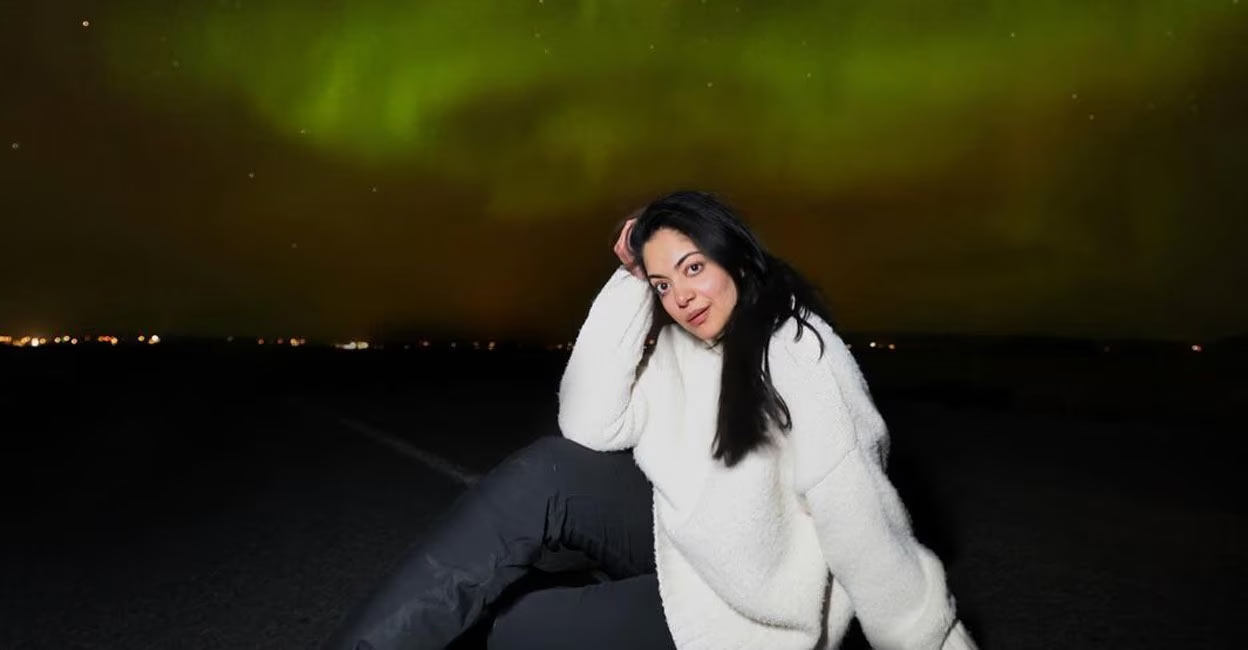
Ahaana Krishna mesmerized by the Northern Lights; shares a glimpse with fans
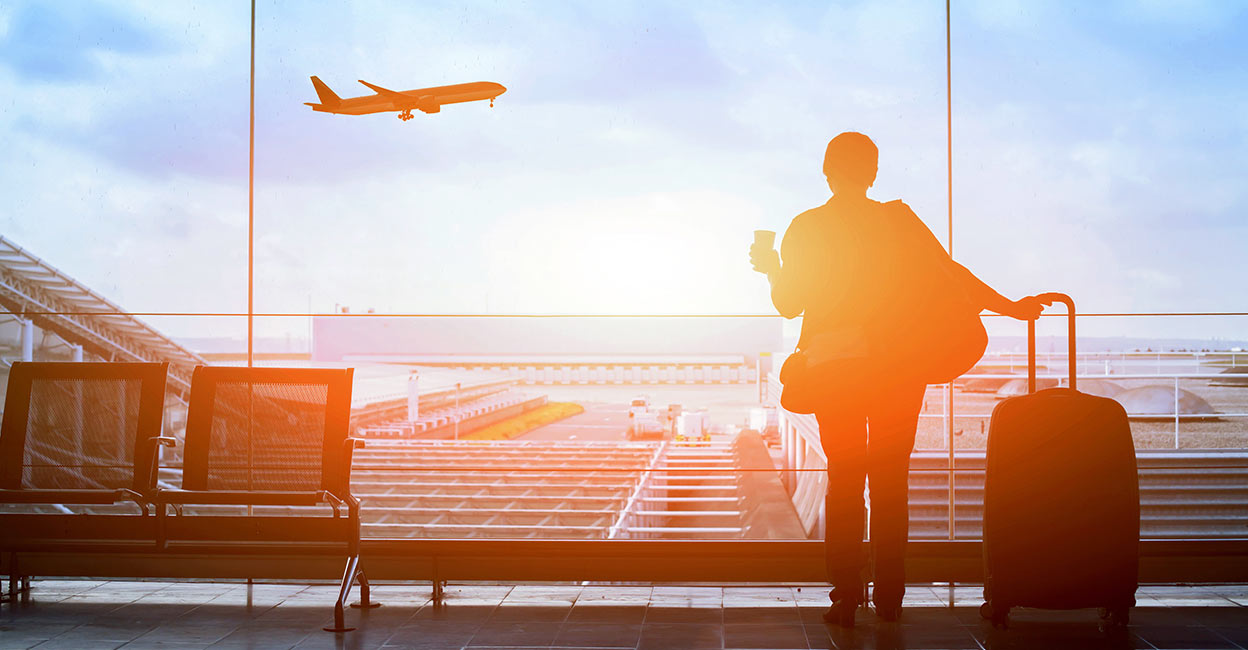
Middle East crisis: Several airlines suspend services, avoid Iranian airspace
Pilgrims, who have deposited the advance and second instalment, should pay the balance amount on or before April 27. The rituals of the Hajj begin on the eighth day of Dhul Hajj and end on the 12th or 13th day of the month. Muslims celebrate Eid ul Adha on the 10th day of Dhul-Hajj.
- Karipur Airport

Dubai rains: 3 flights from Kerala cancelled, several delayed

Trial run of Kerala's first double-decker train on Pollachi-Palakkad route successful

Sachin's visa rejection in Premalu: Why does it happen?

KSRTC service launched in March to Tamil Nadu stopped abruptly: Here's why

Holiday rush: It's chock-a-block on Thamarassery Ghat Road

Nilambur – Kottayam Express has just two stops in 66 kilometres: Why?

Kerala might not get a third Vande Bharat: Here's why
- Articles >
The Moscow Metro Museum of Art: 10 Must-See Stations
There are few times one can claim having been on the subway all afternoon and loving it, but the Moscow Metro provides just that opportunity. While many cities boast famous public transport systems—New York’s subway, London’s underground, San Salvador’s chicken buses—few warrant hours of exploration. Moscow is different: Take one ride on the Metro, and you’ll find out that this network of railways can be so much more than point A to B drudgery.
The Metro began operating in 1935 with just thirteen stations, covering less than seven miles, but it has since grown into the world’s third busiest transit system ( Tokyo is first ), spanning about 200 miles and offering over 180 stops along the way. The construction of the Metro began under Joseph Stalin’s command, and being one of the USSR’s most ambitious building projects, the iron-fisted leader instructed designers to create a place full of svet (radiance) and svetloe budushchee (a radiant future), a palace for the people and a tribute to the Mother nation.
Consequently, the Metro is among the most memorable attractions in Moscow. The stations provide a unique collection of public art, comparable to anything the city’s galleries have to offer and providing a sense of the Soviet era, which is absent from the State National History Museum. Even better, touring the Metro delivers palpable, experiential moments, which many of us don’t get standing in front of painting or a case of coins.
Though tours are available , discovering the Moscow Metro on your own provides a much more comprehensive, truer experience, something much less sterile than following a guide. What better place is there to see the “real” Moscow than on mass transit: A few hours will expose you to characters and caricatures you’ll be hard-pressed to find dining near the Bolshoi Theater. You become part of the attraction, hear it in the screech of the train, feel it as hurried commuters brush by: The Metro sucks you beneath the city and churns you into the mix.
With the recommendations of our born-and-bred Muscovite students, my wife Emma and I have just taken a self-guided tour of what some locals consider the top ten stations of the Moscow Metro. What most satisfied me about our Metro tour was the sense of adventure . I loved following our route on the maps of the wagon walls as we circled the city, plotting out the course to the subsequent stops; having the weird sensation of being underground for nearly four hours; and discovering the next cavern of treasures, playing Indiana Jones for the afternoon, piecing together fragments of Russia’s mysterious history. It’s the ultimate interactive museum.
Top Ten Stations (In order of appearance)
Kievskaya station.

Kievskaya Station went public in March of 1937, the rails between it and Park Kultury Station being the first to cross the Moscow River. Kievskaya is full of mosaics depicting aristocratic scenes of Russian life, with great cameo appearances by Lenin, Trotsky, and Stalin. Each work has a Cyrillic title/explanation etched in the marble beneath it; however, if your Russian is rusty, you can just appreciate seeing familiar revolutionary dates like 1905 ( the Russian Revolution ) and 1917 ( the October Revolution ).
Mayakovskaya Station
Mayakovskaya Station ranks in my top three most notable Metro stations. Mayakovskaya just feels right, done Art Deco but no sense of gaudiness or pretention. The arches are adorned with rounded chrome piping and create feeling of being in a jukebox, but the roof’s expansive mosaics of the sky are the real showstopper. Subjects cleverly range from looking up at a high jumper, workers atop a building, spires of Orthodox cathedrals, to nimble aircraft humming by, a fleet of prop planes spelling out CCCP in the bluest of skies.
Novoslobodskaya Station

Novoslobodskaya is the Metro’s unique stained glass station. Each column has its own distinctive panels of colorful glass, most of them with a floral theme, some of them capturing the odd sailor, musician, artist, gardener, or stenographer in action. The glass is framed in Art Deco metalwork, and there is the lovely aspect of discovering panels in the less frequented haunches of the hall (on the trackside, between the incoming staircases). Novosblod is, I’ve been told, the favorite amongst out-of-town visitors.
Komsomolskaya Station
Komsomolskaya Station is one of palatial grandeur. It seems both magnificent and obligatory, like the presidential palace of a colonial city. The yellow ceiling has leafy, white concrete garland and a series of golden military mosaics accenting the tile mosaics of glorified Russian life. Switching lines here, the hallway has an Alice-in-Wonderland feel, impossibly long with decorative tile walls, culminating in a very old station left in a remarkable state of disrepair, offering a really tangible glimpse behind the palace walls.
Dostoevskaya Station

Dostoevskaya is a tribute to the late, great hero of Russian literature . The station at first glance seems bare and unimpressive, a stark marble platform without a whiff of reassembled chips of tile. However, two columns have eerie stone inlay collages of scenes from Dostoevsky’s work, including The Idiot , The Brothers Karamazov , and Crime and Punishment. Then, standing at the center of the platform, the marble creates a kaleidoscope of reflections. At the entrance, there is a large, inlay portrait of the author.
Chkalovskaya Station
Chkalovskaya does space Art Deco style (yet again). Chrome borders all. Passageways with curvy overhangs create the illusion of walking through the belly of a chic, new-age spacecraft. There are two (kos)mosaics, one at each end, with planetary subjects. Transferring here brings you above ground, where some rather elaborate metalwork is on display. By name similarity only, I’d expected Komsolskaya Station to deliver some kosmonaut décor; instead, it was Chkalovskaya that took us up to the space station.
Elektrozavodskaya Station

Elektrozavodskaya is full of marble reliefs of workers, men and women, laboring through the different stages of industry. The superhuman figures are round with muscles, Hollywood fit, and seemingly undeterred by each Herculean task they respectively perform. The station is chocked with brass, from hammer and sickle light fixtures to beautiful, angular framework up the innards of the columns. The station’s art pieces are less clever or extravagant than others, but identifying the different stages of industry is entertaining.
Baumanskaya Statio
Baumanskaya Station is the only stop that wasn’t suggested by the students. Pulling in, the network of statues was just too enticing: Out of half-circle depressions in the platform’s columns, the USSR’s proud and powerful labor force again flaunts its success. Pilots, blacksmiths, politicians, and artists have all congregated, posing amongst more Art Deco framing. At the far end, a massive Soviet flag dons the face of Lenin and banners for ’05, ’17, and ‘45. Standing in front of the flag, you can play with the echoing roof.
Ploshchad Revolutsii Station

Novokuznetskaya Station
Novokuznetskaya Station finishes off this tour, more or less, where it started: beautiful mosaics. This station recalls the skyward-facing pieces from Mayakovskaya (Station #2), only with a little larger pictures in a more cramped, very trafficked area. Due to a line of street lamps in the center of the platform, it has the atmosphere of a bustling market. The more inventive sky scenes include a man on a ladder, women picking fruit, and a tank-dozer being craned in. The station’s also has a handsome black-and-white stone mural.
Here is a map and a brief description of our route:
Start at (1)Kievskaya on the “ring line” (look for the squares at the bottom of the platform signs to help you navigate—the ring line is #5, brown line) and go north to Belorusskaya, make a quick switch to the Dark Green/#2 line, and go south one stop to (2)Mayakovskaya. Backtrack to the ring line—Brown/#5—and continue north, getting off at (3)Novosblodskaya and (4)Komsolskaya. At Komsolskaya Station, transfer to the Red/#1 line, go south for two stops to Chistye Prudy, and get on the Light Green/#10 line going north. Take a look at (5)Dostoevskaya Station on the northern segment of Light Green/#10 line then change directions and head south to (6)Chkalovskaya, which offers a transfer to the Dark Blue/#3 line, going west, away from the city center. Have a look (7)Elektroskaya Station before backtracking into the center of Moscow, stopping off at (8)Baumskaya, getting off the Dark Blue/#3 line at (9)Ploschad Revolyutsii. Change to the Dark Green/#2 line and go south one stop to see (10)Novokuznetskaya Station.
Check out our new Moscow Indie Travel Guide , book a flight to Moscow and read 10 Bars with Views Worth Blowing the Budget For
Jonathon Engels, formerly a patron saint of misadventure, has been stumbling his way across cultural borders since 2005 and is currently volunteering in the mountains outside of Antigua, Guatemala. For more of his work, visit his website and blog .

Photo credits: SergeyRod , all others courtesy of the author and may not be used without permission
Elektrostal Tourism
- Things To Do in Elektrostal
- Elektrostal Itineraries
- Elektrostal Hotels
Elektrostal Trip Planner
Plan your customized day by day trip plan for Elektrostal. Choose from various experinces categories as adventure, romantic and family and kids friendly for your trip using using Elektrostal trip planner.
- THINGS TO DO
- HOW TO REACH
- TOP RESTAURANTS
- Moscow Trip Planner
- Yaroslavl Oblast Trip Planner
Threat of Mutually Assured Destruction Right on Israel’s Doorstep
Even fighters from Hezbollah—which is funded by Iran—want to avoid further escalation in a region on the brink of all-out war.

AFP via Getty Images
MAJD-AL-ZOUN, Lebanon—“If we went to an all-out war, it would be the end of both Lebanon and Israel ,” said a Hezbollah fighter in the battlefields of South Lebanon ominously.
While some in Iran and Israel seem hellbent on escalating the current Middle East conflict, the normally aggressive Hezbollah militia has been notably reticent to use its heavier weaponry and missiles in the aftermath of Oct. 7. That puts the militants—who themselves are heavily-funded by Iran—in a notably different position to their backers in Tehran, who launched an unprecedented aerial assault on Israel at the weekend.
The Daily Beast was granted rare access to Hezbollah controlled towns on the Lebanese -Israeli border shortly before that attack, and the difference in attitudes was stark.
On the surface, the orange groves and ancient Phoenician ruins of the city of Tyre look like they would make an attractive tourist spot, but the picturesque scenery hides one of the world’s most formidable arsenals. Any of the fruit trees could have a rocket launcher or missile hiding between its leaves. In total, the group is believed by U.S. and Israeli intelligence to possess up to 150,000 rockets.
Some believe a full-scale launch could quickly overwhelm Israel’s Iron Dome and David’s Sling defense systems. Yet for now, both sides have limited their attacks. Hezbollah initiated the first wave of rocket attacks on Oct. 8, in support of Hamas’s fight in Gaza. “The military actions we're taking now are to support our allies in Hamas, so they’re not alone against Israel,” says the Hezbollah fighter codenamed Hajj. “Israel is our enemy” he says, pausing to consider his words… “But this is not our war.”
In one of the biggest barrages since the Hamas attack on Israel last October, Hezbollah fired around 40 missiles across the border on Saturday, but no one was killed.
On the surface, Hezbollah and Hamas seem ideal allies—both are Islamist groups that say they are devoted to the destruction of the state of Israel. But a closer look reveals significant differences between the two groups’ practices. Because Hezbollah is considered the strongest non-state military in the world, the stakes of a war here are much higher.
Two explosions sounded in the background, and a drone hummed overhead, a quiet day by the standards of South Lebanon, where a low-level conflict has simmered. The tinderbox is waiting to be set alight. “Hezbollah is probably using only a small fraction of their weapons so far, maybe just some old ones they don't really want anymore… In fact, the weapons they've used until now don't even amount to 5 percent of their capabilities,” Hajj says, comparing the situation between the two countries to what would happen if the United States and Russia went into a full-blown nuclear exchange. “The general secretary of Hezbollah Al Sayed Hassan Nassrallah, says we might not know the full extent of their power. But we trust Al Sayed’s words when he says they have destructive power that Israel can't handle.”
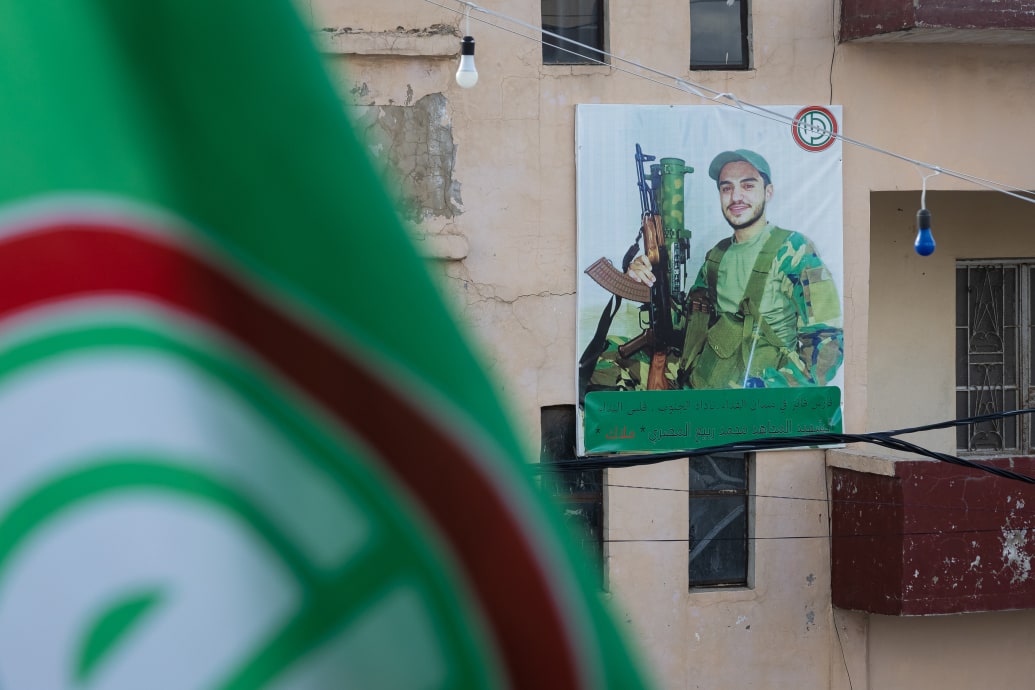
Collin Mayfield
From the ruins of the border town of Majd-Al-Zoun, you can see over the “Valley of Death”—as one local called it—into Israel. We could see a radar installation and the outline of houses. Hezbollah frequently targets these positions, but most launches are stopped by Israel’s air defense systems.
“Don’t go into the valley” Hajj said, “it is extremely dangerous. Or at least I’m not coming with you!” He was right—one Israeli soldier who was fighting in the North had told the Daily Beast in Tel Aviv that the area closest to the border was a free-fire zone, where the Israelis would target anyone who came near them.
Despite the on-going skirmishes, the fighters demurred on saying that they had any desire to escalate the conflict further. Another militant said: “It’s like this: if Israel keeps its attacks limited to the borders, we won't retaliate. But if they escalate, they'll see our response.” Yet Israel has consistently struck further and further against Hezbollah and other Iranian assets, including in Beirut, Baalbek, and most recently at the Syrian Consulate in Damascus. Their caution was a notable contrast to the hawkishness of Israeli officials and soldiers on Israel’s Northern border when The Daily Beast visited them last month, they insisted that Israel should escalate the border war and ‘strike first’ against Hezbollah.
Most casualties in Lebanon so far have been of militants, around 380 spread between Hezbollah, the Amal Movement and Hamas. In one house in a village we passed, three children and their grandmother had been killed in a strike. We were not safe as press either—on Oct. 13, an Israeli tank strike killed a Reuters reporter and wounded six others. An investigation by Agence-France Press, one of whose reporters was badly injured, said that the strike was likely deliberate. More recently, the Islamic Emergency and Relief Corps said seven volunteer medics were killed in an Israeli airstrike in the town of Hebbarieh.
The match has been lit once before. In 2006, Israel and Hezbollah fought a 40-day war after the militant group kidnapped three Israeli soldiers guarding the border. The conflict killed more Hezbollah fighters than Israelis, but Israel failed to destroy Hezbollah’s military arsenal and the group has kept soldiers and weapons near the border for the following two decades.
On the border, overlooking Israel, Lamiya Rashid, said she was one of the few remaining civilian residents of Majd-Al-Zoun who decided to stay despite the dangers. “My husband and I were sitting together one Friday night at ten o'clock. It felt like the end of the world had come upon us. You can see where the shell hit, just across the street from us. We were sitting here when it happened. All we saw was dust and rubble, and we described it as doomsday.”
She said she had seven children, some of whom had remained with her. The walls of her house were missing chunks, and her windows had been smashed by explosions.
“Israel wants revenge” Hajj explained, saying that Israel would target civilian objects as well as military installations. “Many Israelis have left their homes, and they want civilians here to have to leave their homes as well.”
Hezbollah is labeled a terrorist group by the U.S., Israel and most of the European Union. In 1980s, it was responsible for suicide bombings and kidnappings As the group’s power has increased in Lebanon, it has been described as a “state within a state.” Many here now say, it is far more efficient than the decrepit and dysfunctional official Lebanese government.
Unlike Hamas, the rulers of the “open air prison” camp in Gaza who had little to lose, Hezbollah has a huge stake in the future of Lebanon. Israeli officials have sworn to lay waste to large swathes of the country if a larger war erupts, and Hezbollah must weigh all its actions against domestic political considerations. The overwhelming majority of the Lebanese population do not want a war with Israel. Hajj acknowledges this, saying that “we are facing a tough economic crisis.”
Meanwhile, Rashid says she still has no intention of leaving her ever more destroyed hometown. “We’ve been living in this house for a long time, and it's been six months since this war started, and we haven’t left our house for a moment, and we won't start now… We see and hear all these airstrikes all the time, but we’re strong on our land, and hopefully, it will end. But what can I say to you? Israel’s history is criminal and the whole world knows it. Even the countries that support Israel know this truth but refuse to admit it!”
Got a tip? Send it to The Daily Beast here .
READ THIS LIST
- 1.1 History
- 4 Get around
- 8 Stay healthy
- 9.1 Stampedes
- 9.2 Hajj scams
The traditional annual Muslim pilgrimage to Mecca , the Hajj is a mandatory religious duty for Muslims and is the largest annual gathering of people in the world. It occurs between the 8th and 12th of the last month of the Islamic calendar, Dhu al-Hijjah. Hajj is that symbolic pilgrimage when millions of Muslims from around the world belonging to different ethnic groups, socioeconomic strata and cultures travel to Mecca together and praise to Allah and ask for forgiveness of their sins.
The five day spiritual Hajj, which dates back to the 7th century of the Christian calendar, is designed to promote the bonds and affection between Muslim communities and shows that everyone is equal in the eyes of Allah by wearing simple white garment Ihram. Pilgrims spend days worshiping in and around the holy city of Mecca and perform rituals that make up the Hajj.
Understand [ edit ]

The Hajj is one of the five pillars of Islam ; every adult Muslim is supposed to do it at some time in their life if health and finances permit. In poorer areas it is not uncommon for whole families or even whole villages to chip in to send one person.
It is an exceedingly cosmopolitan affair. Predominantly Muslim areas include most of North Africa , the Middle East and Central Asia , plus South and Southeast Asian countries such as Pakistan , Bangladesh , Malaysia and Indonesia and several countries in West Africa . Several other areas have large Muslim minorities and there are some Muslims nearly everywhere. The pilgrimage brings Muslims from all these places together.
It is also one of the largest human migrations. Every year over two million people visit Saudi Arabia for this pilgrimage. Since they all arrive at roughly the same time and visit the same places in the same order, and since a large number of Saudis go as well, this is a major logistical problem. The Saudi government has a ministry to manage it.
The Hajj can only be completed during the Islamic month of Dhu al-Hijjah. A pilgrimage to Mecca at any other time is known as Umrah (عمرة), and while not compulsory is strongly recommended.
People who have completed the Hajj are entitled to use the honorific title Haji (men) or Hajjah (women).
History [ edit ]
The early history of Hajj can be traced back to the time of Abraham, around 2000 BCE. According to Islamic tradition, Abraham was ordered by Allah to leave his wife Hagar and his son Ishmael alone in the uninhabited desert with little food and water, where Mecca stands today. When the food and water were gone, Hagar, in search of water for her baby Ishmael, desperately ran seven times between the two hills of Safa and Marwah but found nothing. Returning in despair to Ishmael, she saw him scratching the ground with his leg and a water fountain underneath. Later, the uninhabited desert area started to attract inhabitants due to availability of water and tribes started to settle in Mecca. When Ishmael grew up, he was married into a tribe in Mecca. At some point, Abraham was commanded by Allah to construct a building believed to be the Kaaba, which he did with the help of Ishmael. Abraham was commanded by Allah to invite people to perform pilgrimage in Mecca around the Kaaba.
In pre-Islamic Arabia, Meccans were idol worshippers and the Kaaba was surrounded by pagan idols. During the annual pilgrimage season, people would visit the Kaaba to perform rituals some of which were introduced by Arabs of that time. It is believed some pilgrims would perform tawaf around Kaaba in a naked state. During the initial years of Muhammad's prophethood, the pilgrimage season offered Muhammad the occasion to preach Islam to the foreign people who came to Mecca for pilgrimage. In 630 CE, after Mecca was conquered by Muhammad, he led his followers from Medina to Mecca, cleansed the Kaaba by destroying all the pagan idols, and then reconsecrated the building to Allah. In 631 CE, at the direction of Muhammad, Abu Bakr led some 300 Muslims to the pilgrimage in Mecca where Ali delivered a sermon stipulating the new rites of Hajj and abrogating the pagan rites. He especially declared that no unbeliever, pagan, or naked man would be allowed to circumambulate the Kaaba from the next year. In 632 CE, Muhammad performed his only pilgrimage with a large number of followers, and instructed them on the rites of Hajj and the manners of performing them. From then, Hajj became one of the five pillars of Islam.
In medieval times, pilgrims would gather in the big cities of Syria, Egypt, and Iraq to go to Mecca in groups and caravans comprising tens of thousands of pilgrims, often under state patronage. Some Hajj caravans were guarded by soldiers because there were risks of robbery or attack or natural hazards. Muslim travelers like Ibn Jubayr and Ibn Battuta have recorded detailed accounts of Hajj travels in medieval times.
Despite it being illegal for non-Muslims, a few Western explorers have managed the journey — most notably, Sir Richard Burton made the Hajj in 1853 and wrote an account of the trip .
Prepare [ edit ]
Unless you are a citizen of Saudi Arabia you will need a visa, obtained in advance from a Saudi embassy. Visas are allocated on a quota system, based on the number of Muslims in a country. You may need to provide evidence that you are Muslim, such as a letter from your local mosque. You are not permitted to perform the Hajj on a tourist visa; you will need a special Hajj visa for the purpose. However, you may perform Umrah on a tourist visa outside the Hajj season.
Citizens of most countries can register directly with the Saudi government on their Hajj website , where Hajj visas are allocated on a first come first serve basis. Some countries have domestic regulation on the Hajj; in these countries, you will need to register with the local governing body of Islam, who will allocate Hajj places based on their own domestic rules.
Since 2023, women are no longer required to travel with a mahram (male family member) to perform the Hajj, and may now travel alone.
Proof of vaccination for meningitis (specifically the ACYW135 vaccine) between three years before and ten days before your entry into Saudi Arabia is required. Yellow fever vaccination is required if you arrive from any country with known yellow fever infections, and polio vaccinations are required for children up to 15. As millions of people from all over the world gather for Hajj and therefore you will be exposed to many diseases, you may want to discuss other vaccinations and preventative measures with your doctor.
Throughout Hajj you are expected to remove signs of wealth or class distinctions by replacing your clothing with simple white garments. These pieces are called ‘ihram clothing’, and for women comprise of a white abaya, scarf or shawl and socks. The ihram clothing of Hajj is a signifier of equality: all pilgrims are presented as equals in the eyes of God. The white clothing also symbolises purity, and the state of absolute devotion that the pilgrims are in.
Get in [ edit ]
In medieval times, people made the pilgrimage to Mecca by camel caravan or by ship; the journey often took months, sometimes even years.
Today, most pilgrims arrive via the airport at Jeddah . Airlines in most Muslim countries offer special flights specifically for Hajj and Jeddah has many regular commercial flights as well, in particular flights to most major European or Middle Eastern hubs. See Jeddah#Get_in for more information.
There are two special Hajj terminals, the largest buildings by roof area in the world at 260,000 m 2 (2.8 million ft 2 ). They are enormous tents of fiberglass fabric on reinforced concrete poles and steel cables. At Hajj time, there are dozens of large aircraft parked alongside these terminals. These are used only for the Hajj; the airport has other terminals for normal travel. Driving to the North Terminal, you pass between the two Hajj terminals.
From Jeddah — for most pilgrims, directly from the airport — there are chartered buses and taxis to Mecca. Many are painted in the yellow and black pattern used on school buses in North America; seeing dozens of those on the highway is a strange sight if you know them as school buses.
Medina is another entry point, with its airport handling many Hajj flights as well.
The Haramain High-Speed Railway connects Mecca to Medina via Jeddah, and is the quickest and most comfortable way to get to Mecca once you've landed in Saudi Arabia.
Get around [ edit ]
Mecca's Al Mashaaer Al Mugaddassah Metro line ( Arabic : قطار المشاعر المقدسة الخط الجنوبي) is Saudi Arabia's first metro line, and was specifically built to shuttle pilgrims between the different holy sites. It is the highest capacity metro line in the world, but still gets very crowded during the Hajj given the sheer number of pilgrims, so be sure to prepare and plan accoringly.
Umrah [ edit ]
Upon arriving in Mecca and checking into a hotel, pilgrims head to Masjid al-Haram and do Tawaf which involves walking around the Kaaba four times at a fast pace and three times at a slow pace. Tawaf is followed by sa'ay which is done by walking seven times back and forth between the hills of Safa and Marwah (both rituals done within the Masjid al-Haram ).
These first two steps, which can be done at any time of the year, are known as the "lesser Hajj" or Umrah , while the full course is known as the "greater Hajj" or al-Hajj al-Akbar .
Hajj [ edit ]
The traditional Hajj route is as follows:
- First day of Hajj – The 8th day of the Islamic month of Dhu al-Hijjah is the first day of the Hajj pilgrimage. Pilgrims enter into a state of holiness by wearing the Ihram while inside Mecca and proceed to Mina, a neighborhood of Mecca and is some 10 km away from central Mecca. Pilgrims go by walking in large groups and camp overnight in Mina. Mina, the city of tents, has more than 100,000 air-conditioned tents which provide temporary accommodation to Hajj pilgrims. Pilgrims spend the day praying during their stay in Mina.
- Second day of Hajj – On the 9th, pilgrims started to move towards the desert plains of Arafat, some 15 km away from Mina. It is said that a pilgrim's Hajj is considered invalid if they do not spend the afternoon in Arafat. Arafat remains uninhabited most of the year except during Hajj season when it is jam-packed. Pilgrims spend time praying in Arafat until sunset. And as soon as the sun sets, the pilgrims begin to leave Arafat for Muzdalifah. Muzdalifah is some 10 km from Arafat on the route between Mina and Arafat. Pilgrims collect pebbles for the next day's ritual of the stoning of the devil in Arafat and camp overnight at open area of Muzdalifah, and often end-up sleeping in the open air.
- Third day of Hajj – Eid al-Adha begins . On the 10th of Dhu al-Hijjah , pilgrims proceed back to Mina and from Mina continue proceeding towards Jamarat Bridge, some 5 km from Mina. At Jamarat Bridge, a symbolic stoning of the devil is performed which involves throwing seven pebbles at the large wall representing the Devil. After performing the stoning of the devil, pilgrims do the sacrifice of an animal (often performed by proxy by buying a sacrifice voucher in Mecca). After which pilgrims move back to Mecca and do Tawaf and Sa'ii of Hajj. Now Ihram are removed and normal clothing can be worn. By night, pilgrims move back to Mina and spend the night there.
- Fourth day of Hajj – On the 11th, pilgrims again proceed to Jamarat Bridge and perform the stoning of the devil . Pilgrims spend the night in Mina.
- Fifth day of Hajj – On the 12th, pilgrims again proceed to Jamarat Bridge and perform yet another stoning of the devil . By sunset, they move back to Mecca.
- Sixth day of Hajj – On the 13th, pilgrims perform Tawaf Widaa , a final circumambulation of the Kaaba and start to leave Mecca for their homes.
A visit to Medina is optional (though highly encouraged) and not part of the Hajj, but most pilgrims visit Medina after completing the Hajj before heading home.
Buy [ edit ]
It is fairly common for pilgrims coming from carpet-producing areas (much of the Muslim world) to bring along a few rugs to sell along the way to help finance their trip. Places like the bazaar in Jeddah therefore often have a broad selection of rugs, some from quite far away.
Prayer rugs make particularly good souvenirs because they have religious significance and are small enough to be reasonably easy to transport and often moderately priced.
Medina dates are famously excellent.
Stay healthy [ edit ]
The Hajj brings together vast multitudes of pilgrims from all around the world. As of 2013, the Ministry of Hajj states that vaccinations for meningococcal meningitis are required for all pilgrims, and those from yellow fever zones must have a vaccination for that as well.
During major epidemics, Saudi health officials sometimes restrict travel to Mecca and Medina – for instance, during the MERS, Ebola, and COVID-19 epidemics in 2013, 2014, and 2020, respectively.
Stay safe [ edit ]
Stampedes [ edit ].
Hajj attracts dangerously huge crowds with multiple associated risks. From 1990 to 2015, 2777 pilgrims were killed in crushes or stampedes. A crowded tent city in Mina burned in 1997, killing 340. Another 402 died in 1987, when security forces broke up an Iranian demonstration against the United States of America . A construction crane killed 107 when it collapsed in 2015. All of the usual dangers with large crowds, including pickpockets , are very much present.
Stampedes are particularly likely during the stoning of the jamraat . Immediately after the noon prayer is the most crowded and thus the most dangerous time. Tight access controls and a new multi-level bridge spreading out pilgrims prevented a recurrence until 2015, when a stampede during the stoning of the jamraat again led to hundreds of deaths.
Hajj scams [ edit ]
Before the pilgrimage begins, scammers often operate by offering nonexistent air tickets and accommodation, which lands pilgrims stranded after they arrived in Medina or Mecca. Fake Hajj tour packages could also be advertised, with scammers disappear after they received payment. The following provides some advice:
- Always check for the tour operator's background and ensure they are properly licensed and accredited by your local authority.
- In some countries (such as the United Kingdom), tour operators that sells air tickets are also required to be licensed, which ensures booked air tickets are still valid if the tour operator collapses. You should also check for such licensing if they exist in your country. Recommendations from acquaintances may not be authentic.
- Always ensure the terms and conditions are clearly written and keep receipts. They will be useful evidence in case you fall into scam.
- Do not pay in cash or bank transfer, which makes recovering assets difficult. Legitimate tour operators can usually accept credit or debit cards.
Go next [ edit ]
Special visas for Hajj are strictly limited to Mecca , Medina , Mina, Arafah and Muzdalifah. Traveling anywhere else in Saudi Arabia will require an additional travel permit, which is difficult and time-consuming to obtain, and is rarely granted without good reason (e.g. medical emergencies).
Most pilgrims head to Medina after performing Hajj and stay there for few days before going back home. Medina is where Muhammad lived and taught from when he was driven out of Mecca until his triumphant return, and is also where he was buried.
During the Hajj season flights between Jeddah or Medina and any Muslim country are quite cheap since there are many flights full of pilgrims going one way (in before Hajj and out after) and airlines do not want to fly the other way with empty planes. Muslim expatriates working in Saudi Arabia often take advantage of this to visit home; Western expats use it for vacations.
- Has custom banner
- Has warning box
- Usable itineraries
- Usable articles
- Asia itineraries
- Itineraries
Navigation menu

List of Hajj Travel Agents: Choosing the Right Partner
- October 27, 2023
- not assigned
Embarking on the sacred pilgrimage of Hajj is a significant event in the lives of millions of Muslims worldwide. Planning and organizing such a monumental journey require careful consideration and expert guidance.
In this article, we will provide you with a comprehensive list of Hajj travel agents , along with tips on how to choose the right one to ensure a smooth and fulfilling Hajj experience.
List of Hajj Travel Agents
- ABC Hajj Travel Agency
With over 20 years of experience, ABC Hajj Travel Agency offers personalized Hajj packages and excellent customer service. Their knowledgeable staff takes care of all travel arrangements, accommodation, and transportation to ensure a hassle-free pilgrimage.
- XYZ Hajj Tours
Known for their attention to detail, XYZ Hajj Tours provides comprehensive Hajj packages tailored to meet the needs of different pilgrims. They prioritize customer satisfaction and offer guidance throughout the entire journey.
- Global Pilgrimage Services:
Global Pilgrimage Services has a reputation for organizing well-planned and spiritually enriching Hajj trips.
Additionally, They offer a range of packages , including luxury options, to accommodate various budgets and preferences.
- Islamic Travel Agency:
Recognized for their commitment to customer care, Islamic Travel Agency offers a variety of Hajj packages designed to provide a profound spiritual experience. Their knowledgeable guides ensure pilgrims receive valuable insights throughout the journey.
- Dar El Salam:
Dar El Salam specializes in organizing small group Hajj tours, allowing for a more intimate and personalized experience. They emphasize spiritual growth and provide educational programs to enhance the pilgrims’ understanding of the rituals.
Where to Find a List of Hajj Travel Agents
Firstly, online directories.
Websites like “JustUmrah” and “ Nusuk ” provide comprehensive lists of Hajj travel agents, along with customer reviews and ratings. These directories are helpful in comparing different agencies and their services.
Secondly, Local Islamic Centers and Mosques
Many local Islamic centers and mosques maintain contact with reputable Hajj travel agents. They can provide recommendations and guidance on choosing a reliable agency based on their past experiences.
How to Choose Hajj Travel Agents
- Firstly, Accreditation:
Ensure that the travel agent is accredited by the relevant Hajj authorities and licensed to organize Hajj trips. This accreditation ensures compliance with necessary regulations and enhances the credibility of the agency.
- Secondly, Reputation and Experience:
Look for travel agents with a strong track record and extensive experience in organizing Hajj trips . Positive customer testimonials and reviews are indicative of a reliable and trustworthy agency.
- Thirdly, Transparent Pricing:
Choose a Hajj travel agent that provides transparent pricing, clearly outlining all costs involved in the package. Avoid agencies that have hidden charges or ambiguous pricing structures.
- Lastly, Quality of Services:
Consider the quality of accommodation , transportation, and other amenities provided by the travel agent. Read reviews and gather information about their arrangements to ensure comfort and convenience during your journey.
Tips for Choosing Hajj Travel Agents
Start researching and contacting travel agents well in advance to secure your preferred package. Hajj journeys require meticulous planning, and booking early increases your chances of securing a spot.
Seek Recommendations
Ask friends, family , or fellow community members who have previously performed Hajj for recommendations. Their firsthand experiences can provide valuable insights into the quality of services provided by different travel agents.
Attend Hajj Seminars
Attend local Hajj seminars and workshops organized by Islamic centers or travel agencies. These events offer opportunities to gather information, ask questions, and connect with reputable travel agents.
In conclusion, Choosing the right Hajj travel agent is crucial for a successful and spiritually fulfilling pilgrimage. By utilizing the provided list of Hajj travel agents, along with the tips mentioned, you can make an informed decision and embark on your journey with confidence. Remember, thorough research, careful consideration, and seeking recommendations will help ensure a memorable and transformative Hajj experience.

About Writer

Content Team
Related titles.
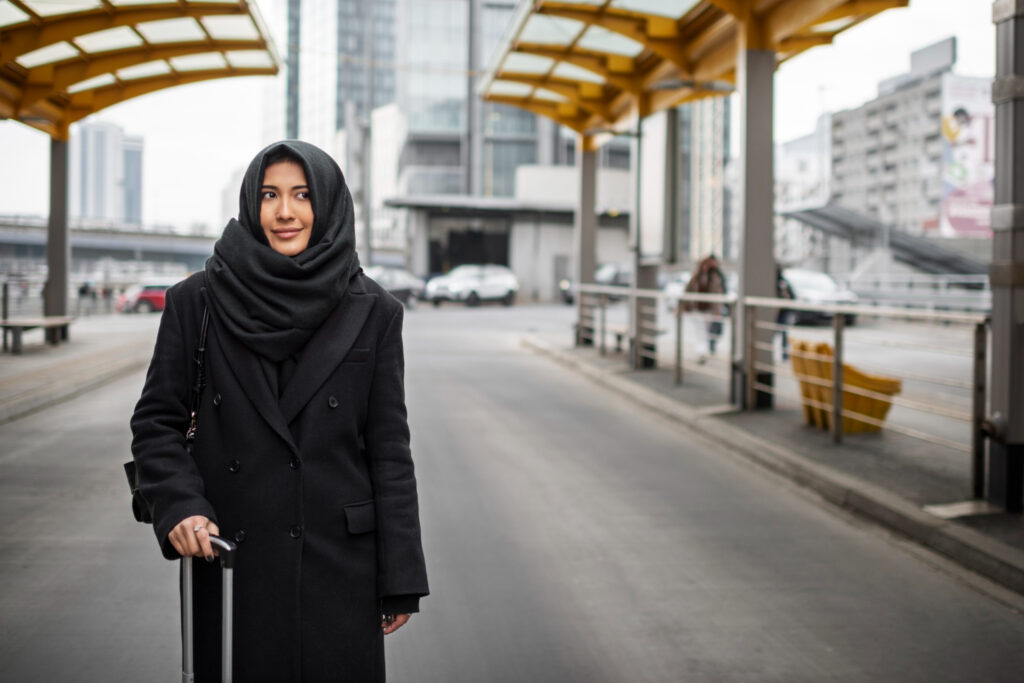
Hajj Travel Packages: A Full Guide to Choosing the Best

Hajj Hotels: A Comprehensive Guide for Pilgrims

Exploring Hajj Tours: A Full Guide for Pilgrims

Useful Links
© justumrah.com all rights reserved., powered by terrific studio.

IMAGES
VIDEO
COMMENTS
Bring a cotton abaya and if you feel comfortable, light colours too. Hajj in 2023 is over the hottest months so making sure you are comfortable is essential. Bring comfortable shoes. Crocks were suggested, and personally, my Birkenstocks, the beach version, have been lifesavers during Umrah. Others suggested you bring adaptors and extension ...
A Comprehensive Hajj Guide: Step-by-Step Journey. October 21, 2023. not assigned. The Hajj, the annual Islamic pilgrimage to Mecca, is a profound spiritual journey undertaken by millions of Muslims worldwide. This sacred pilgrimage holds immense significance in the Islamic faith and carries a deep sense of devotion and unity among believers.
This article has been verified for authenticity by 7 Must know Hajj tips. The holy pilgrimage of Hajj is much more than an obligation that must be fulfilled by every physically and financially able Muslim at least once in their lifetime. It is the fifth pillar of Islam and entails a visit to the Holy Kaaba, the House of Allah SWT. Hajj is described as a blissful once-in-a-lifetime opportunity ...
The following year saw 58,700 pilgrims, and last year's numbers picked up again to one million. Hajj is a spiritual, emotional and physical challenge that tests the patience and temperament of ...
Literally meaning "to take part in the journey," The 7 steps of Hajj are as follows: Step 1 - Ihram and Intentions. Step 2 - Mina aka "City of tents". Step 3 - Mina to Arafat, 9th day of Dhul-Hijjah. Step 4 - Muzdalifah. Step 5 - Rami - Stoning the devil.
This article presents a comprehensive Hajj trip checklist, offering valuable insights into what to prepare, things to avoid, and essential tips for a successful pilgrimage. Hajj Trip Checklist Firstly, Travel Documents - Valid passport with at least six months validity. - Hajj visa or permit.
Hajj takes place each year between the 8th and 12th of Dhul Hijjah.Muslims use the lunar calendar, so the corresponding Gregorian date will vary year to year. This year, Hajj begins in the evening of Thursday 7th July and ends in the evening of 12th July 2022. This handy and comprehensive Hajj guide will help you understand the different aspects of the holy pilgrimage, from its origin, to how ...
What happens at the Hajj? Let's start the journey and in this Hajj guide, we will start with the first day in which, pilgrims travel to Mina on the first day (the Day of Quenching Thirst). Some parties prefer to travel the 5-6 miles from Makkah to Mina either the night before or on the morning of the 8th day of Zilhaj.
Here's a Hajj checklist to help you plan your journey: Prepare your travel essentials. Organise your tours beforehand. This is usually done via a travel agency (including flights and hotel stays) Plan your itinerary before and after Hajj. This should include transport and hotel stays. Prepare spiritually.
The traditional annual Muslim pilgrimage to Mecca, the Hajj is a mandatory religious duty for Muslims and is the largest annual gathering of people in the world. It occurs between the 8th and 12th of the last month of the Islamic calendar, Dhu al-Hijjah. Hajj is that symbolic pilgrimage when millions of Muslims from around the world belonging to different ethnic groups, socioeconomic strata ...
Umrah is a pilgrimage that can be completed at any time of the year. Saudi Arabia's Ministry of Hajj and Umrah offers an electronic portal for Hajj registration and bookings. The portal allows for electronic Hajj visa applications and provides additional information, such as an FAQ page and awareness guides. In order to participate in Hajj, U.S ...
This article aims to provide an in-depth understanding of Hajj tours, what they include, where to find them, and valuable tips to help you select the perfect tour for your spiritual journey. Understanding Hajj Tours. The tours are organized travel packages that cater to the needs of pilgrims wishing to perform the Hajj pilgrimage.
Staying Healthy During the Pilgrimage. Hajj and Umrah can be physically demanding, and it is important to take care of your health during the pilgrimage. Here are some tips to help you stay healthy: Stay hydrated: Drink plenty of water to avoid dehydration, especially during the hot summer months.
Hajj travel advice Hajj pilgrims can reduce their risk of illness and injury through simple precautions. ... Tips to manage health risks during Hajj. Avoid the most densely crowded areas and, when options exist, perform rituals at non-peak hours. Overcrowding can increase the risk of infections such as COVID-19, meningococcal disease, influenza ...
Advanced Tips for Hajj Hotels. Firstly, Early Booking: The Hajj is a peak travel season, and hotels tend to fill up quickly. To secure the best options, book your accommodation well in advance, preferably several months before the pilgrimage. Secondly, Group Bookings:
As per the Hajj Committee's circular, pilgrims from Guwahati in Assam, Srinagar in Jammu & Kashmir, Vijayawada in Andhra Pradesh and Gaya in Bihar have to pay over Rs 4 lakh. The travel via Gaya is the costliest at Rs 4,11,600. The circular said the amount calculated was tentative.
Hajj takes place in Makkah, in modern day Saudi Arabia, during the holy month of Dhu al-Hijjah, the 12th month in the Islamic calendar. Hajj is a spiritual duty and a pillar of Islam, meaning that Hajj must be performed by every Muslim at least once in their lifetime, so long as they are financially, physically, and emotionally able to do so.
Have a look (7)Elektroskaya Station before backtracking into the center of Moscow, stopping off at (8)Baumskaya, getting off the Dark Blue/#3 line at (9)Ploschad Revolyutsii. Change to the Dark Green/#2 line and go south one stop to see (10)Novokuznetskaya Station. Check out our new Moscow Indie Travel Guide, book a flight to Moscow and read 10 ...
This is a comprehensive travel guide for Elektrostal in Russia. From budgeting tips to finding the best spots, this travel guide has got all the insider information to explore Elektrostal like a local. This city is located in the close proximity of a major city Moscow, Russia.
Hezbollah initiated the first wave of rocket attacks on Oct. 8, in support of Hamas's fight in Gaza. "The military actions we're taking now are to support our allies in Hamas, so they're not ...
Tips to Choose the Best Hajj Travel Packages. Start researching and booking your Hajj travel package well in advance to secure the best deals and availability. Define your budget and choose a package that offers the best value for your money. Compare prices and services to make an informed decision. Consult with friends, family, or community ...
Rome2Rio's Travel Guide series provide vital information for the global traveller. Read our range of informative guides on popular transport routes and companies - including Train travel in Spain: A guide to Renfe, Getting to Milan from the airport and How to travel India's Golden Triangle - to help you get the most out of your next trip.
Hajj. The traditional annual Muslim pilgrimage to Mecca, the Hajj is a mandatory religious duty for Muslims and is the largest annual gathering of people in the world. It occurs between the 8th and 12th of the last month of the Islamic calendar, Dhu al-Hijjah. Hajj is that symbolic pilgrimage when millions of Muslims from around the world ...
Moscow, Russia. Moscow is the capital and largest city of the Russian Federation. The city stands on the Moskva River in Central Russia, with a population estimated at 13.0 million residents within the city limits, over 18.8 million residents in the urban area, and over 21.5 million residents in the metropolitan area.
In this article, we will provide you with a comprehensive list of Hajj travel agents, along with tips on how to choose the right one to ensure a smooth and fulfilling Hajj experience. List of Hajj Travel Agents. ABC Hajj Travel Agency; With over 20 years of experience, ABC Hajj Travel Agency offers personalized Hajj packages and excellent ...